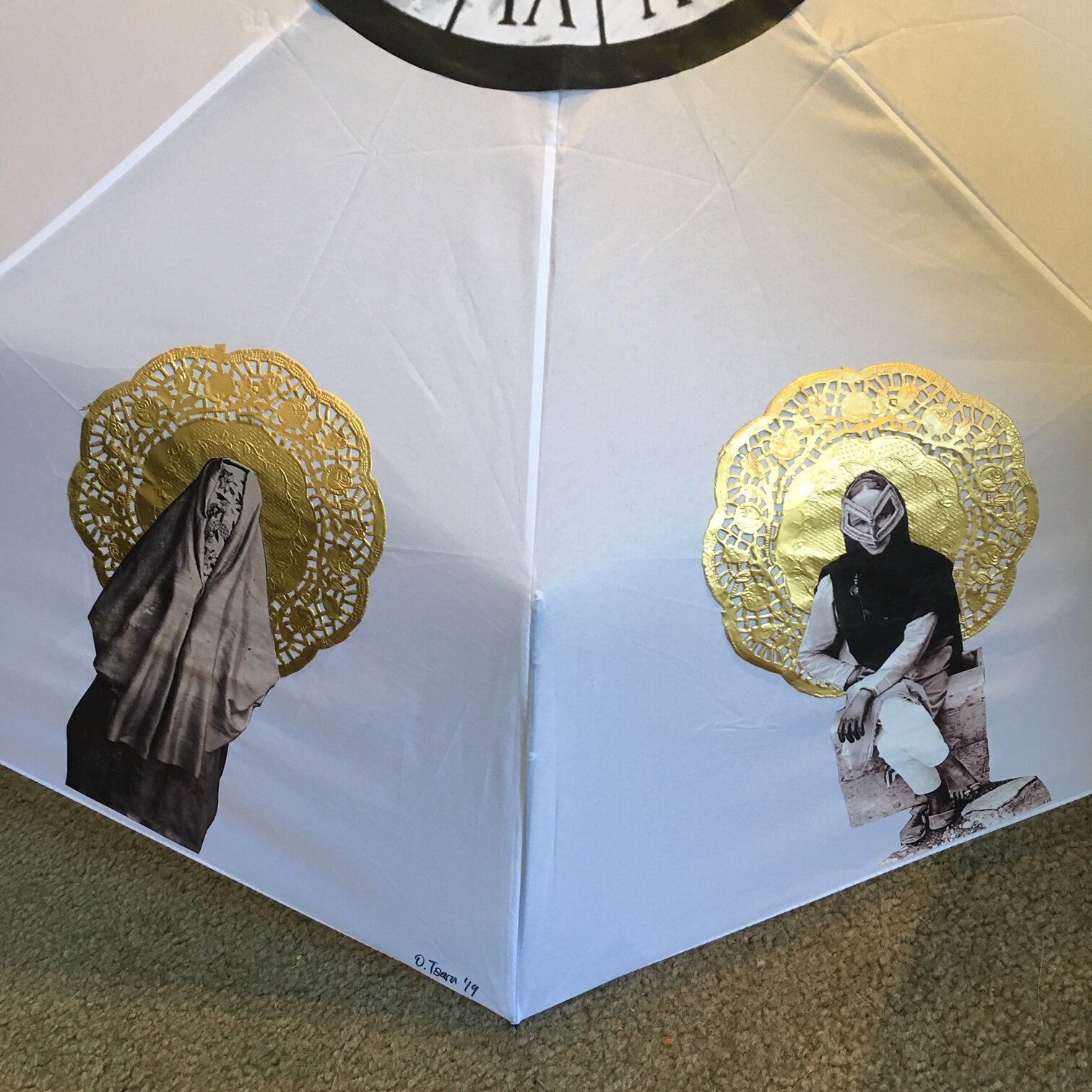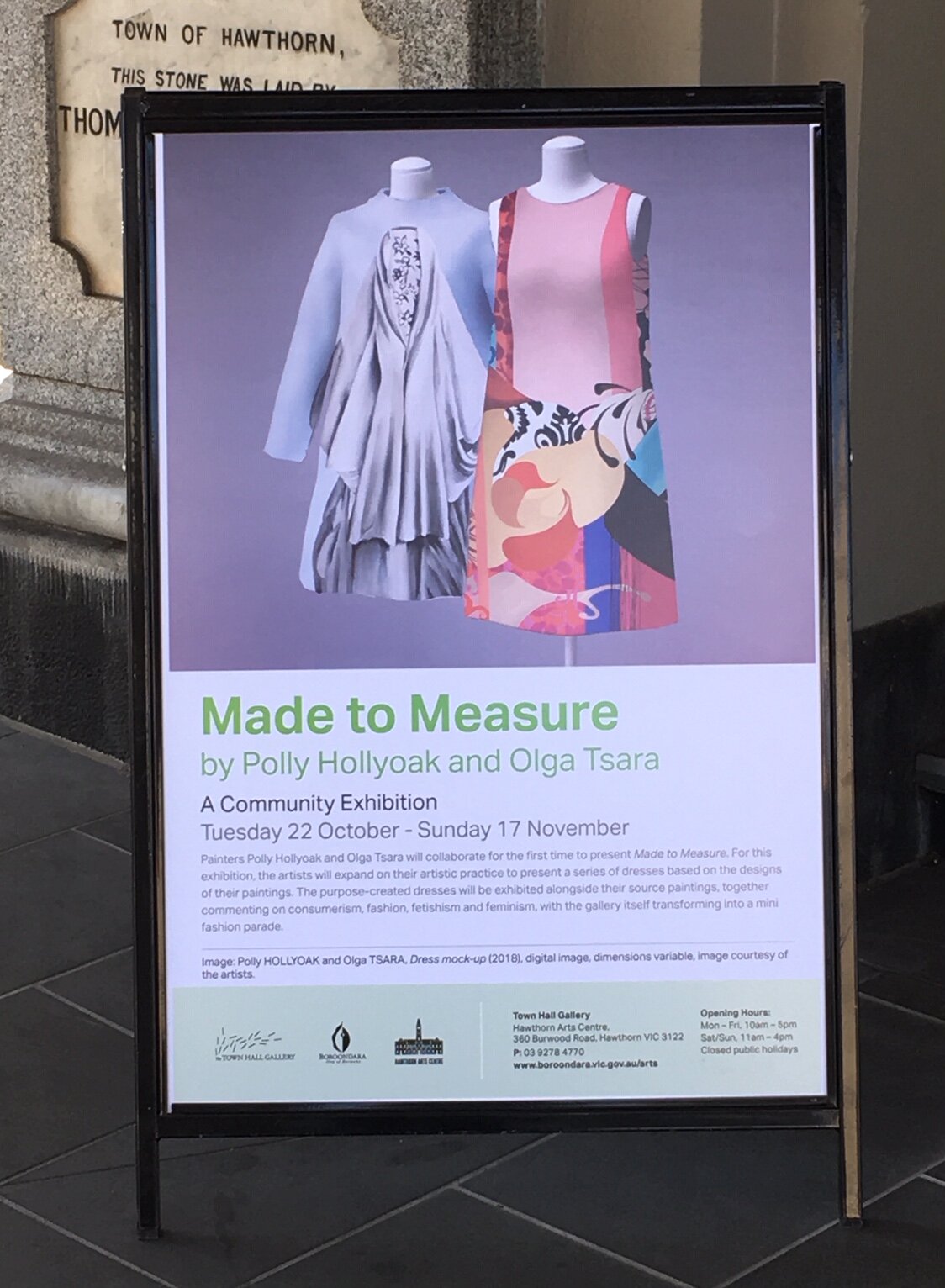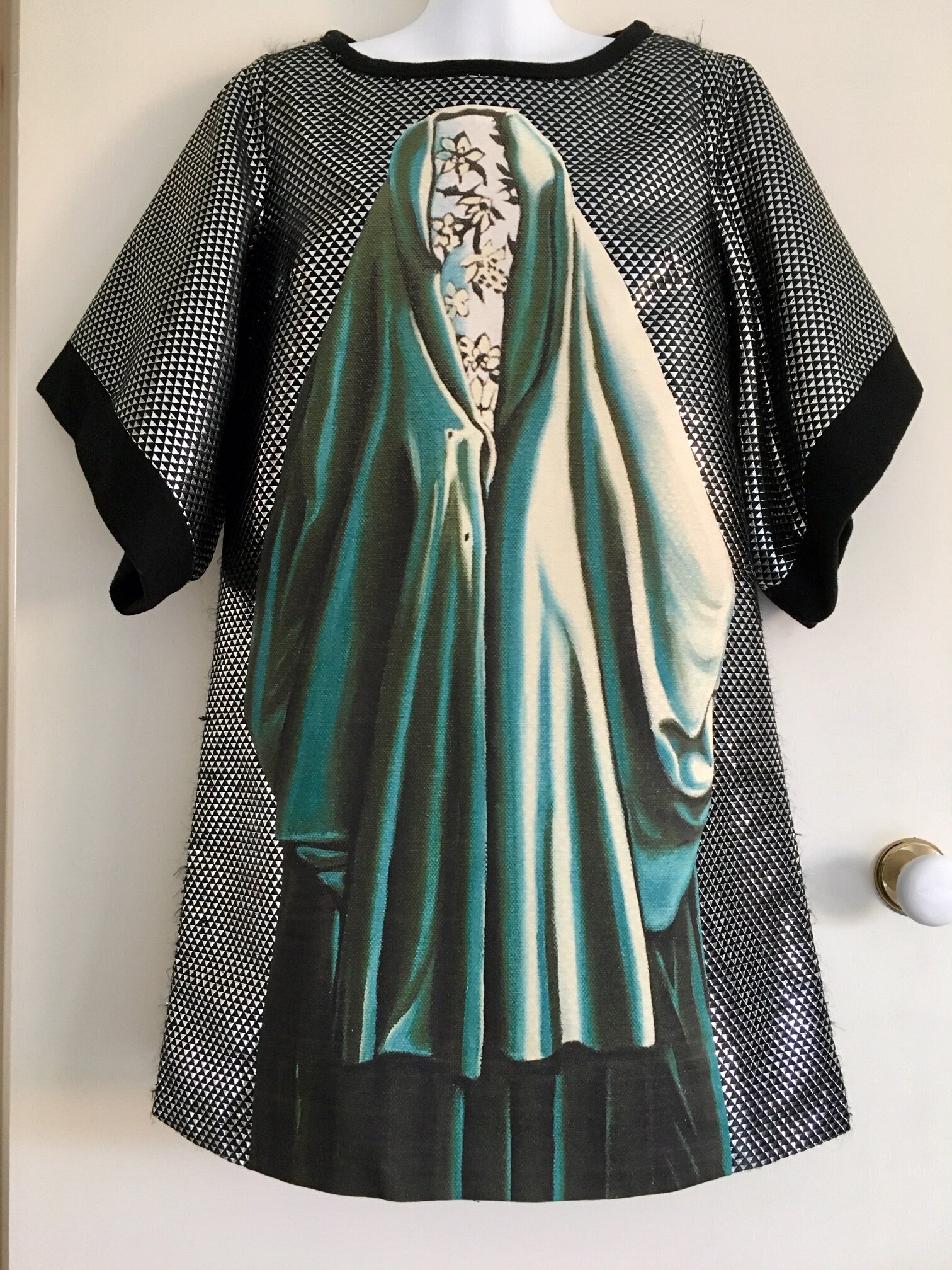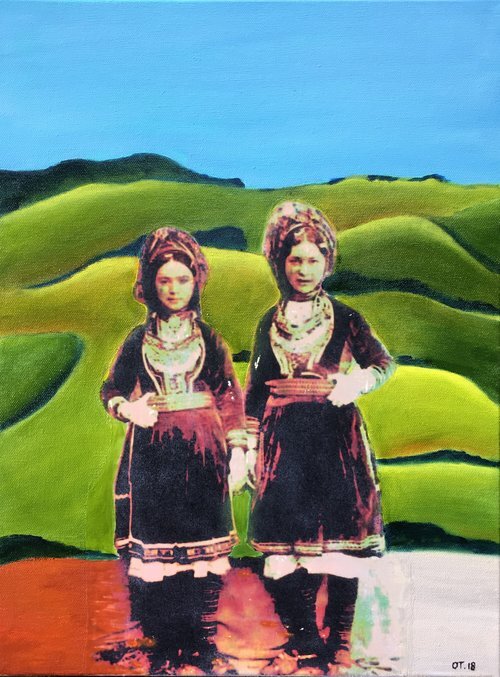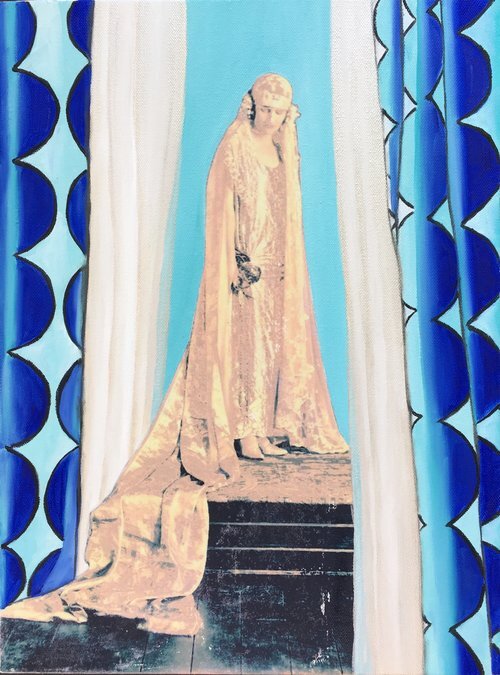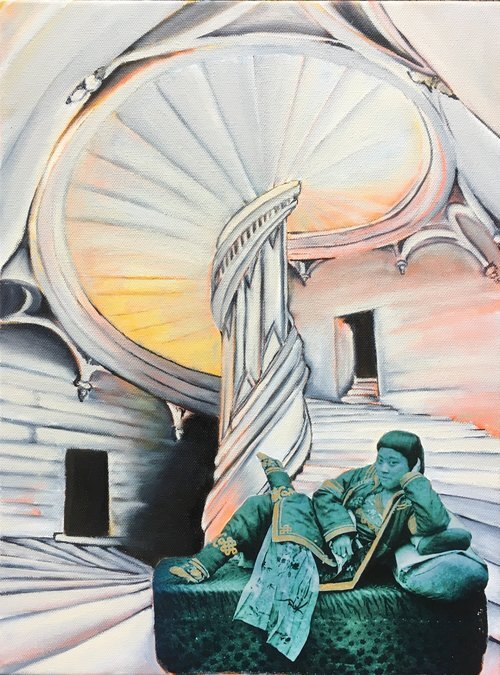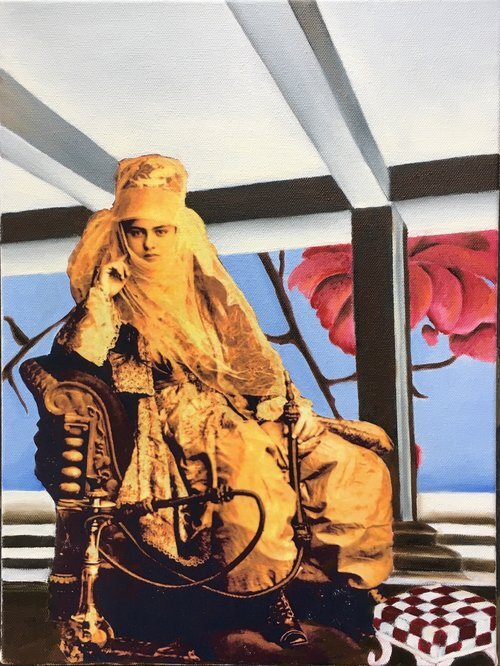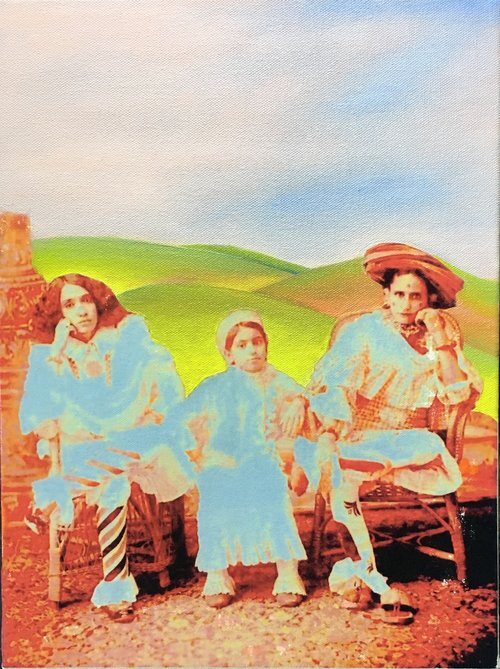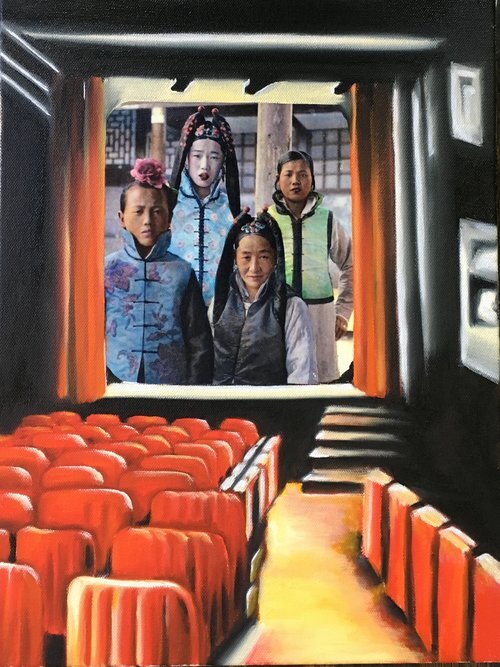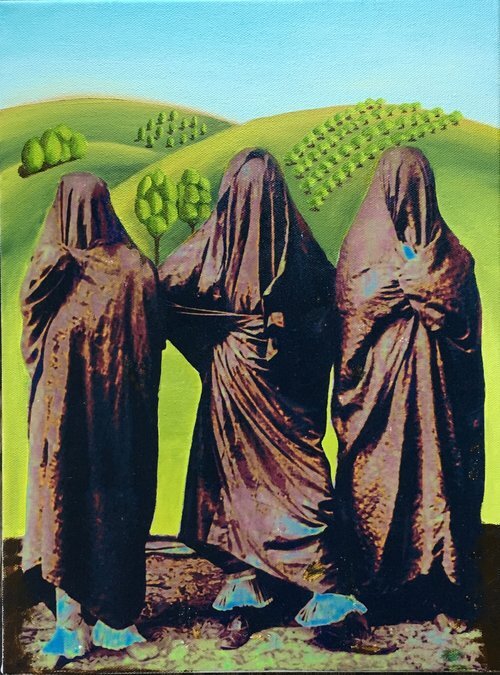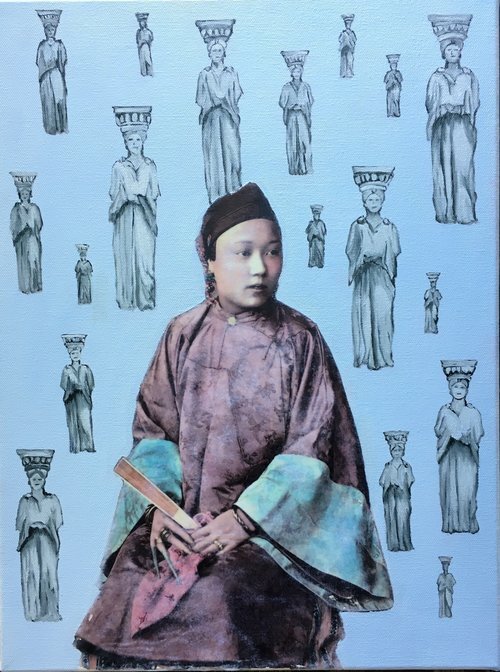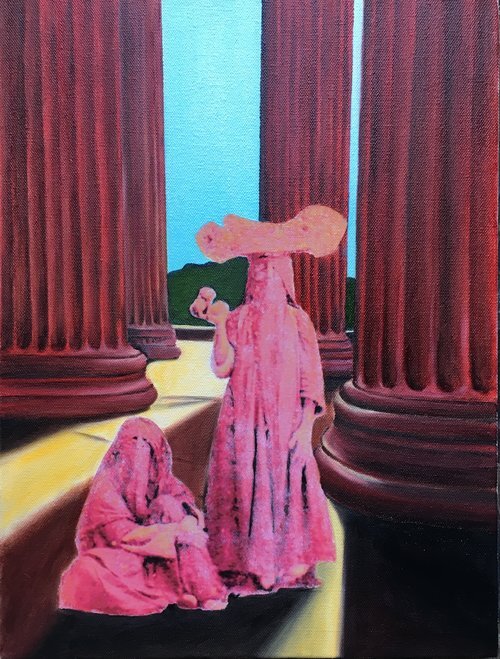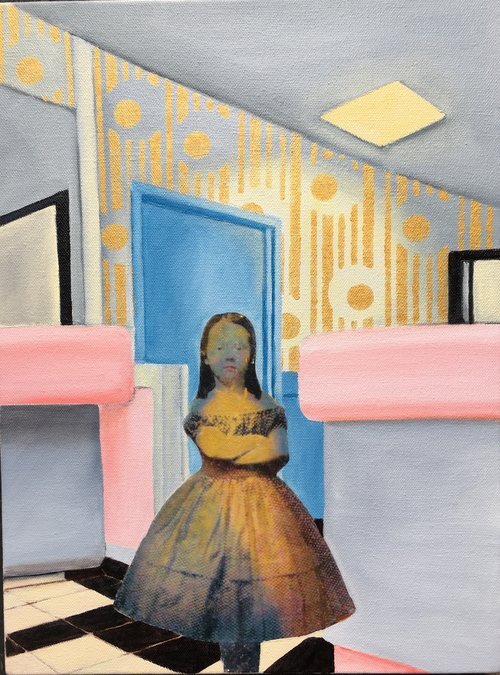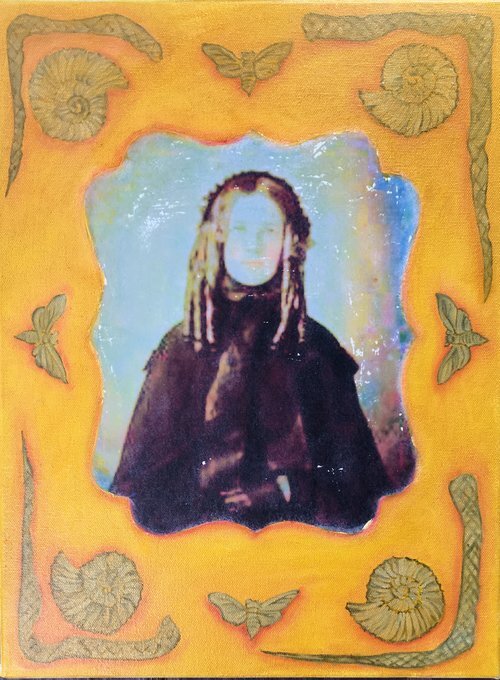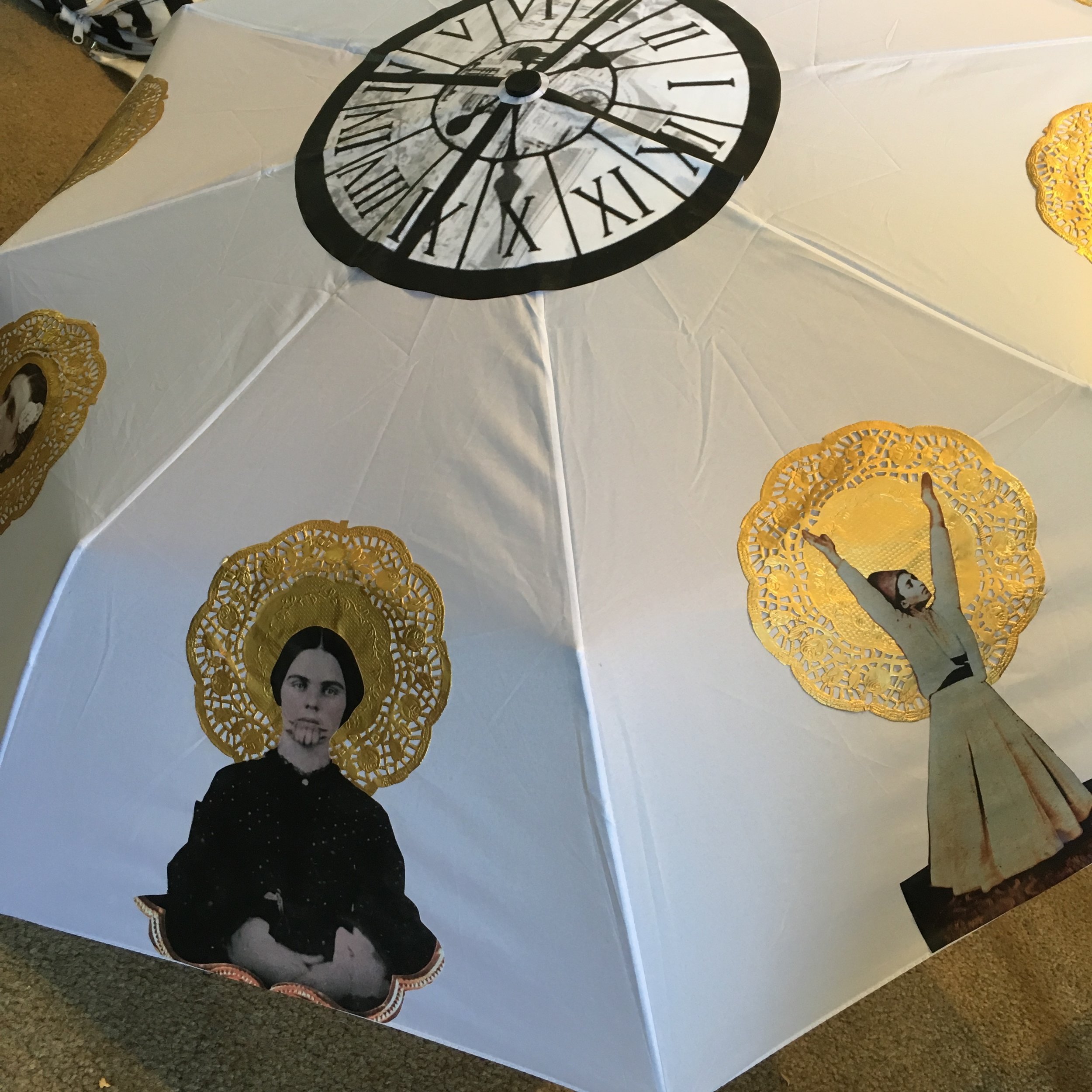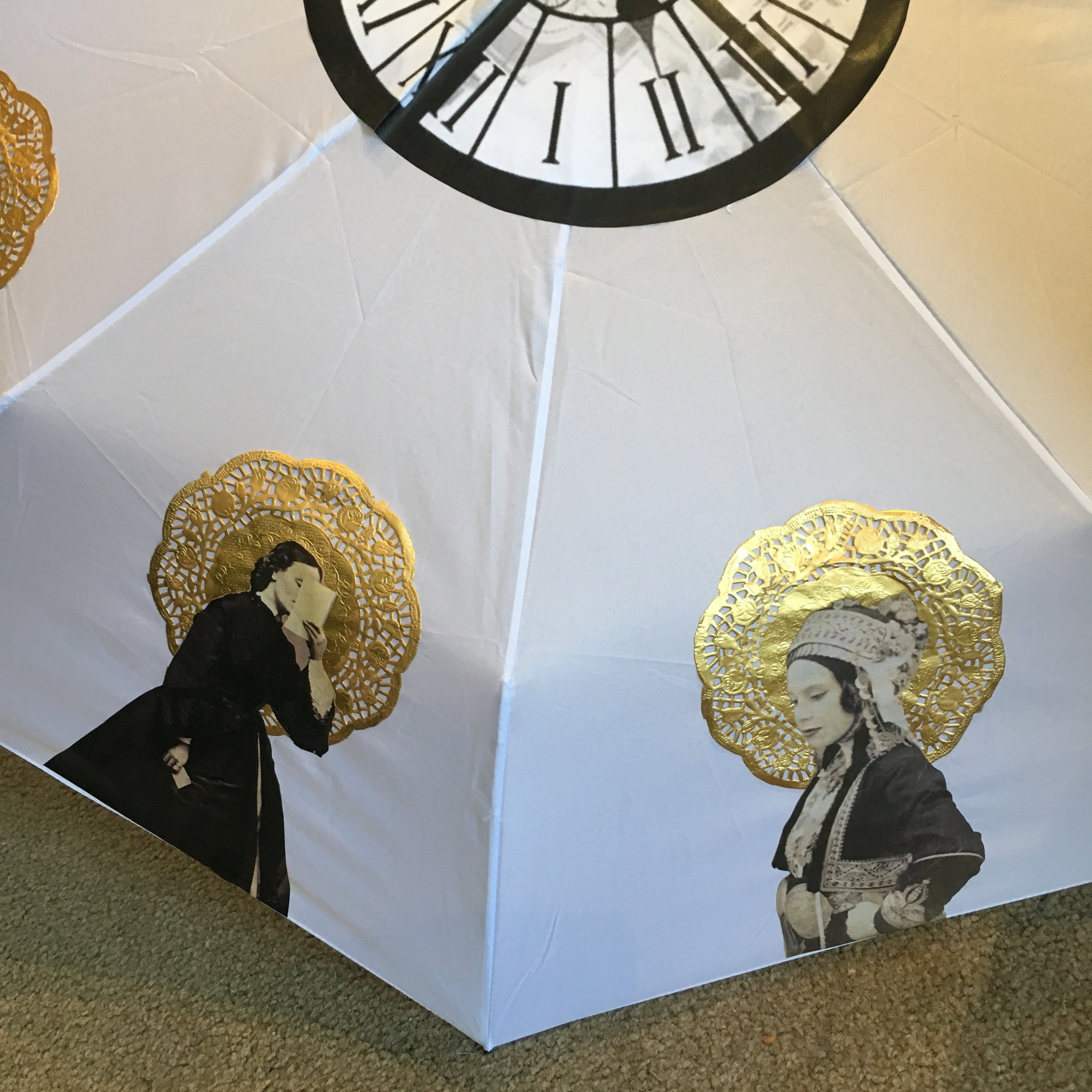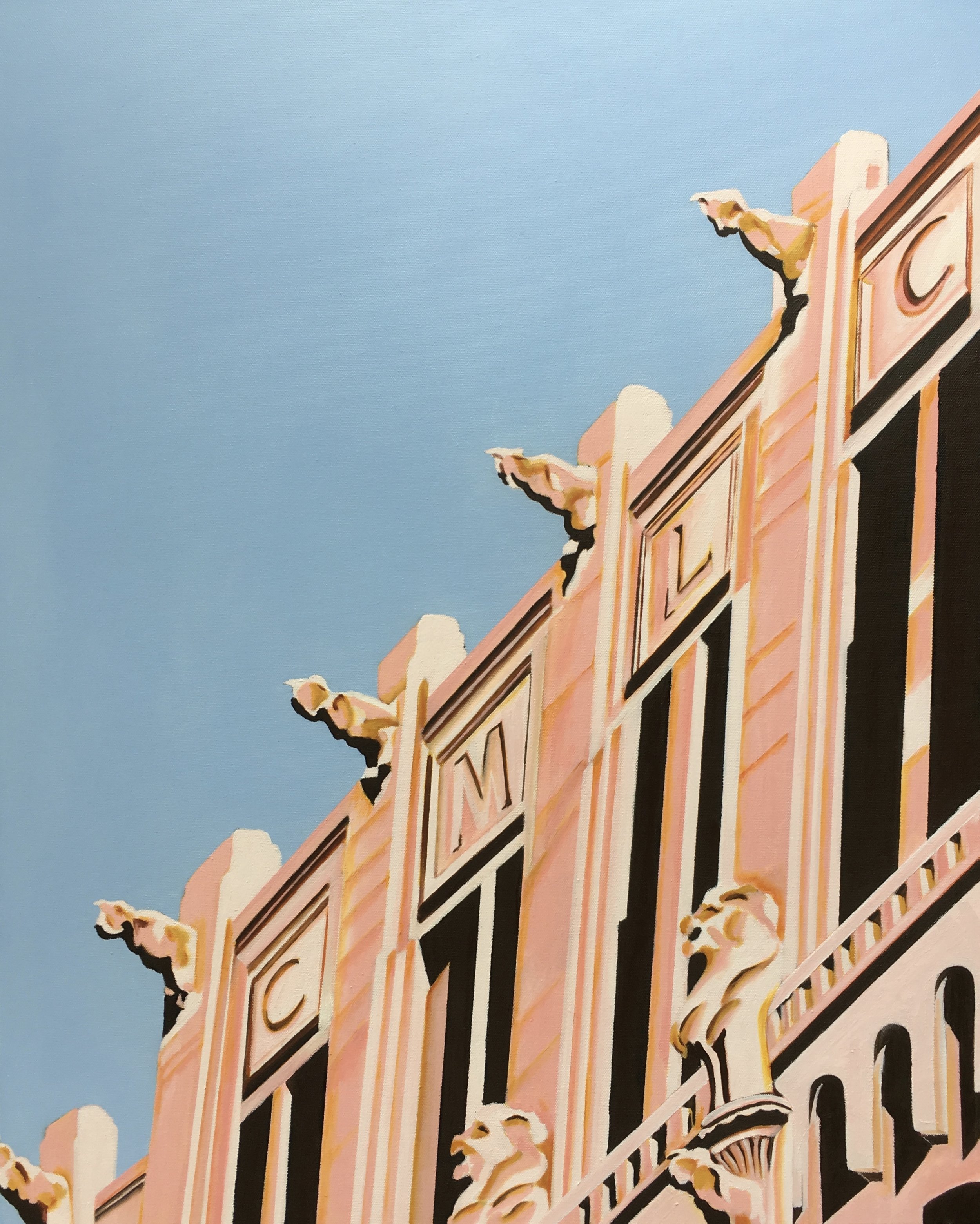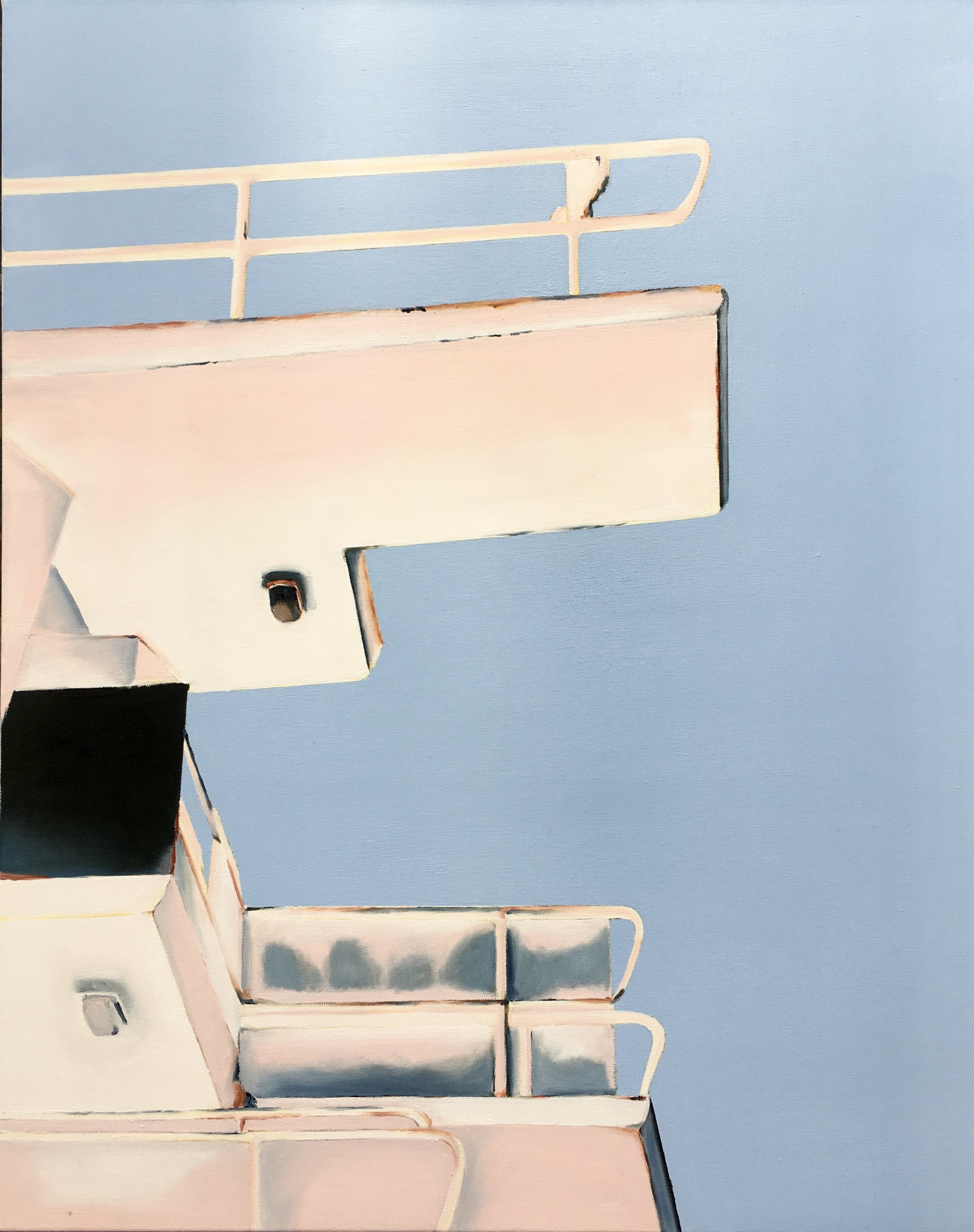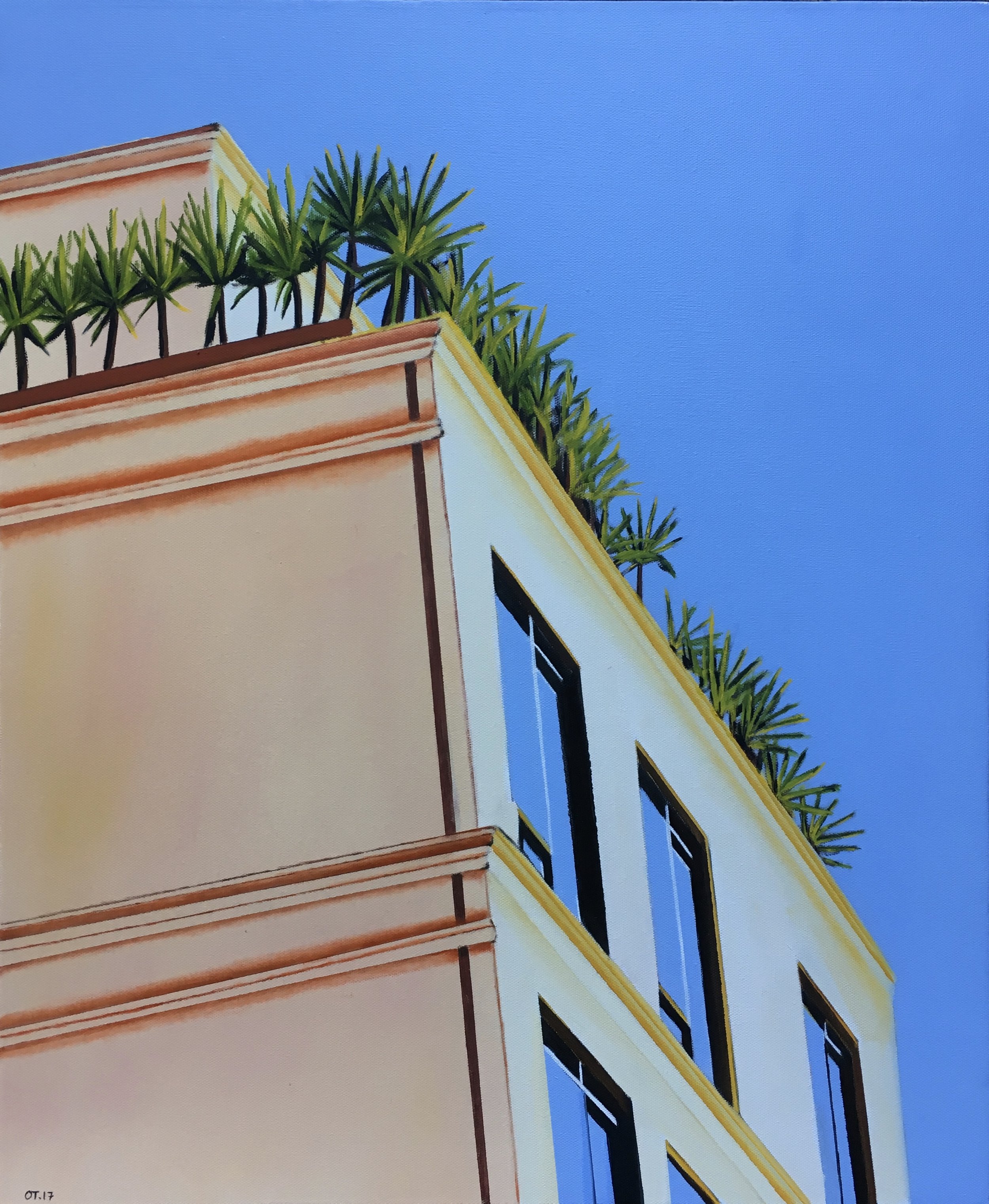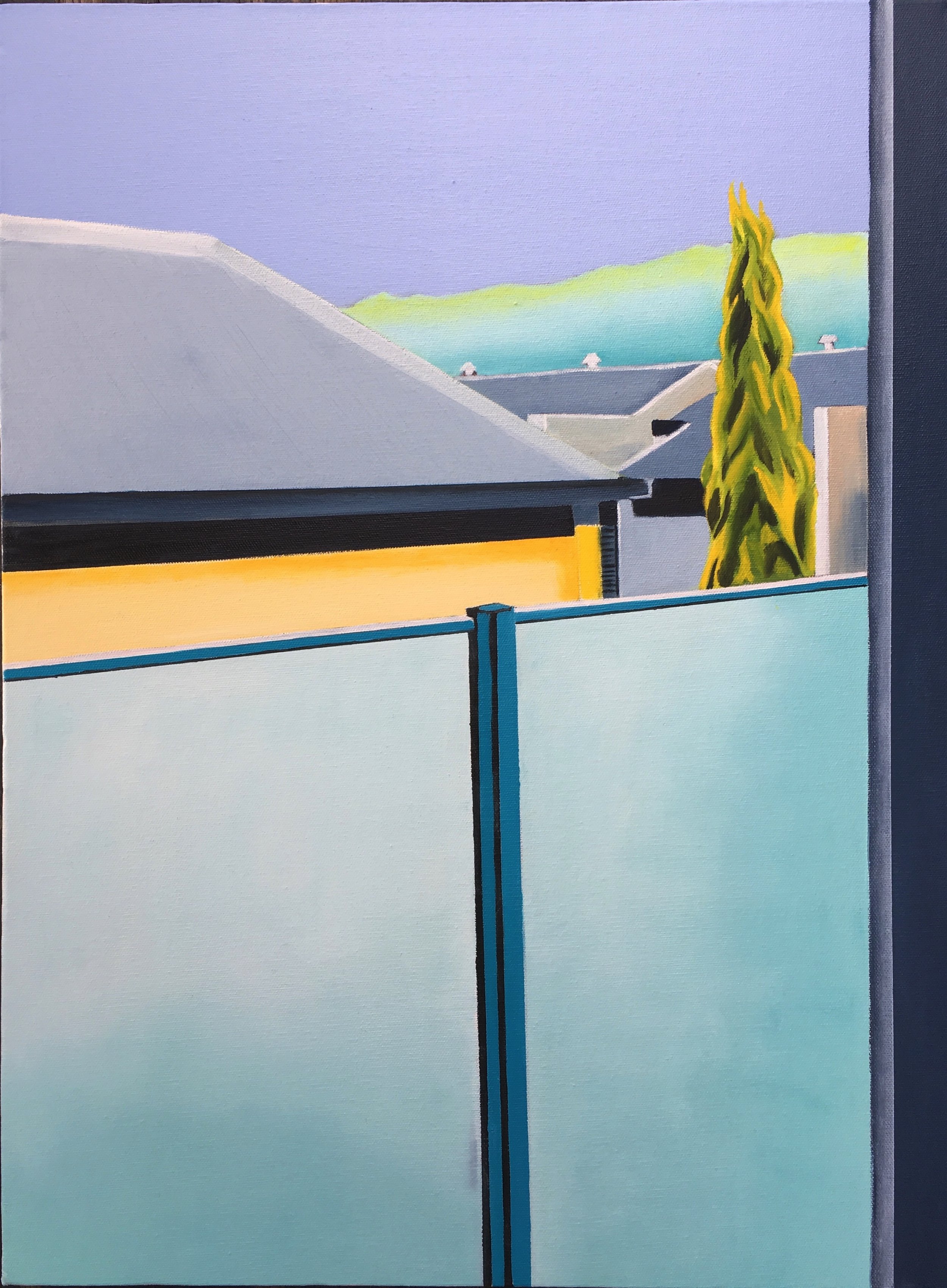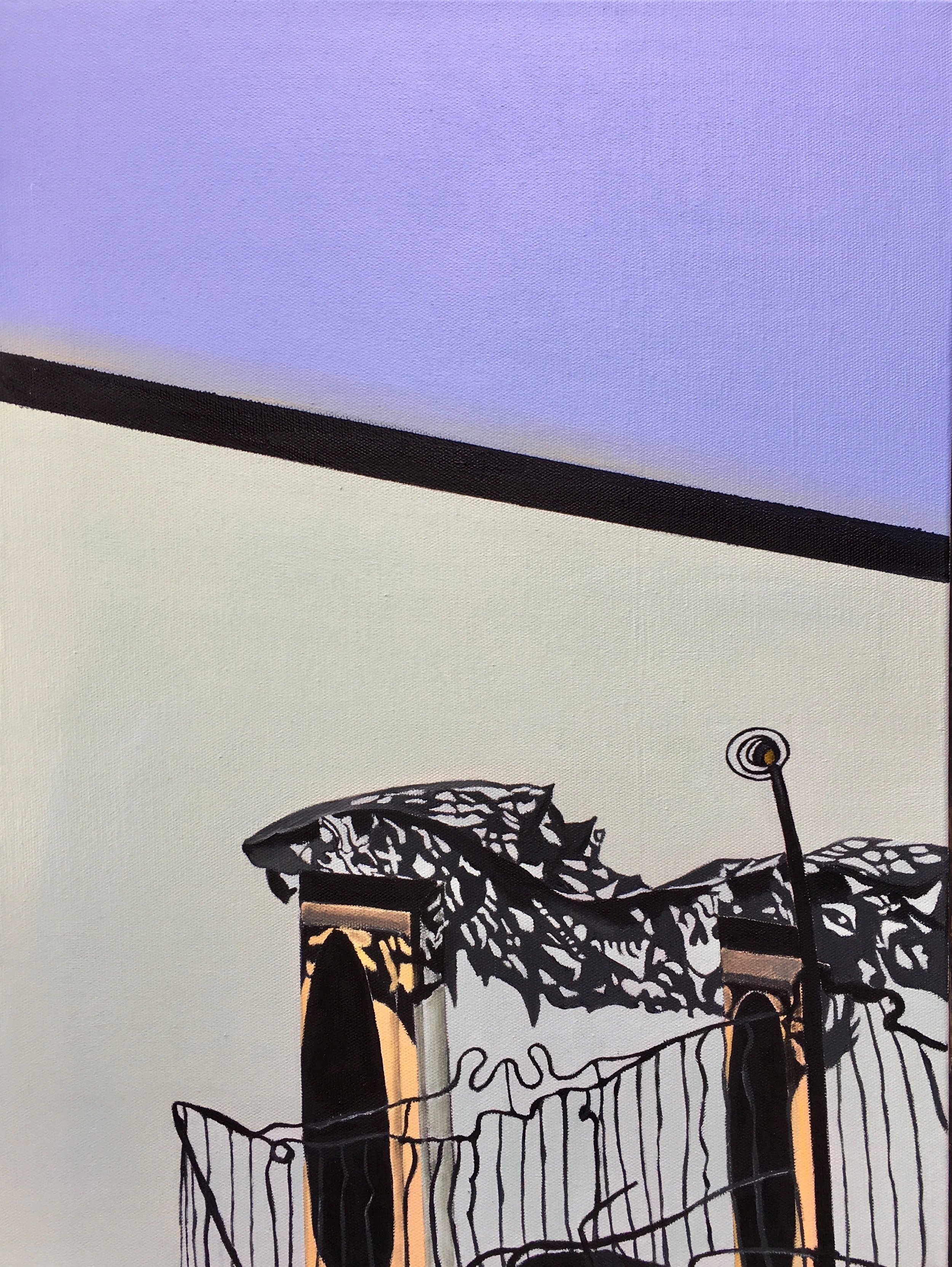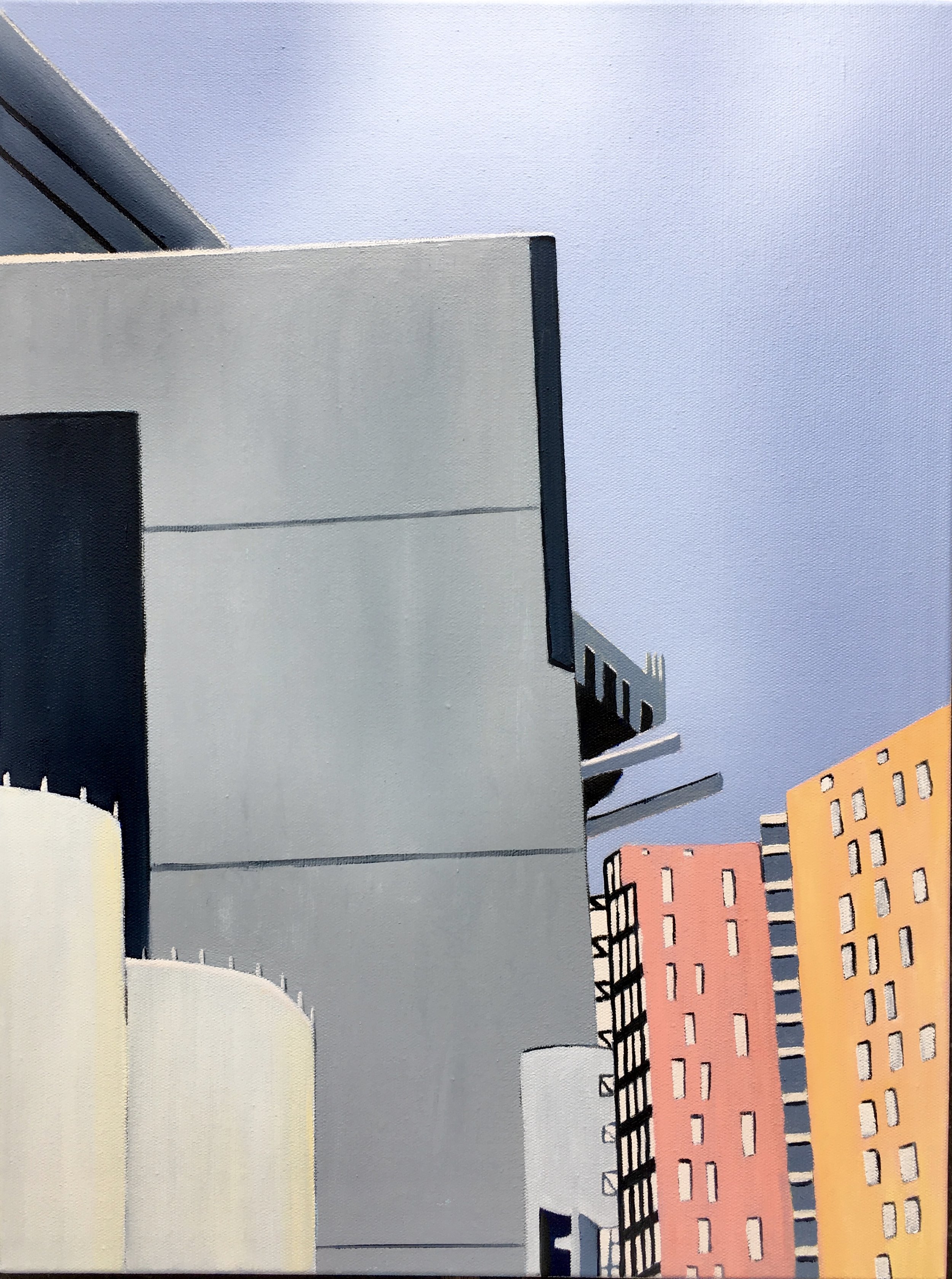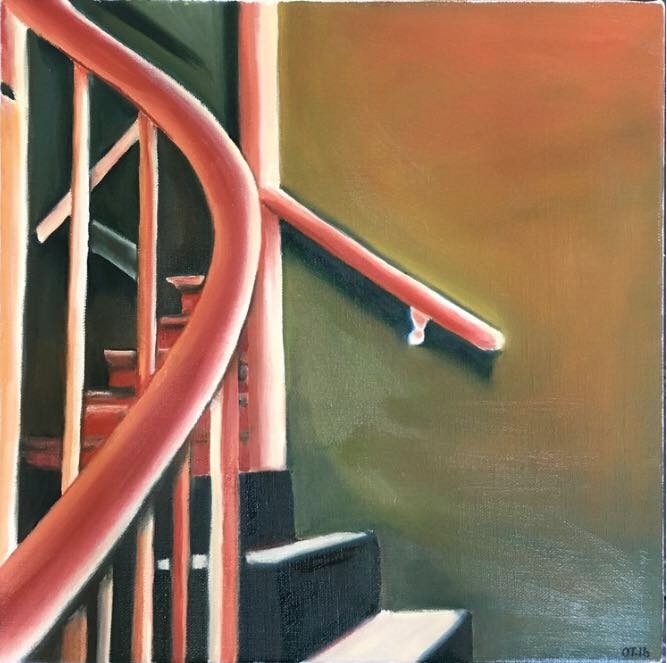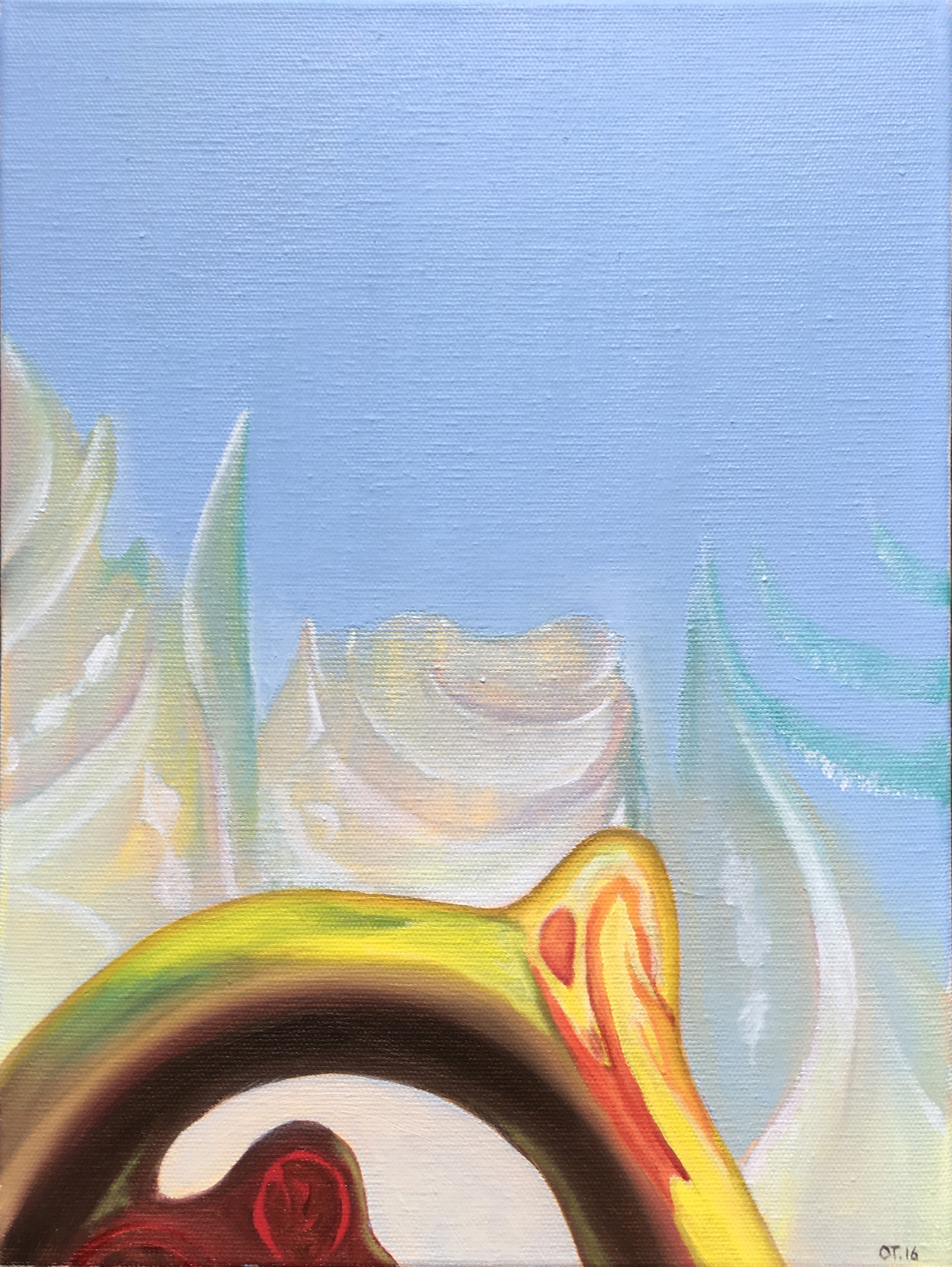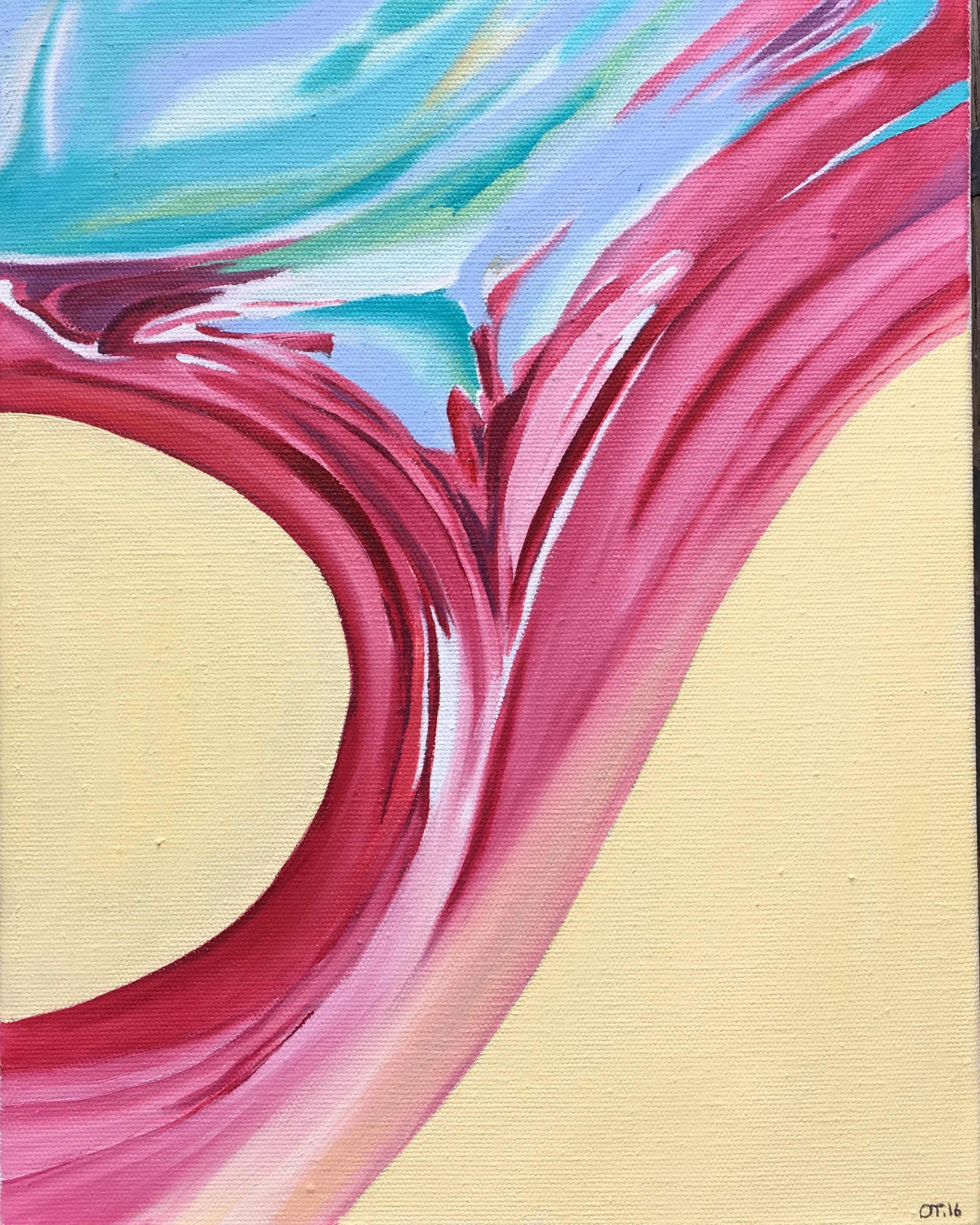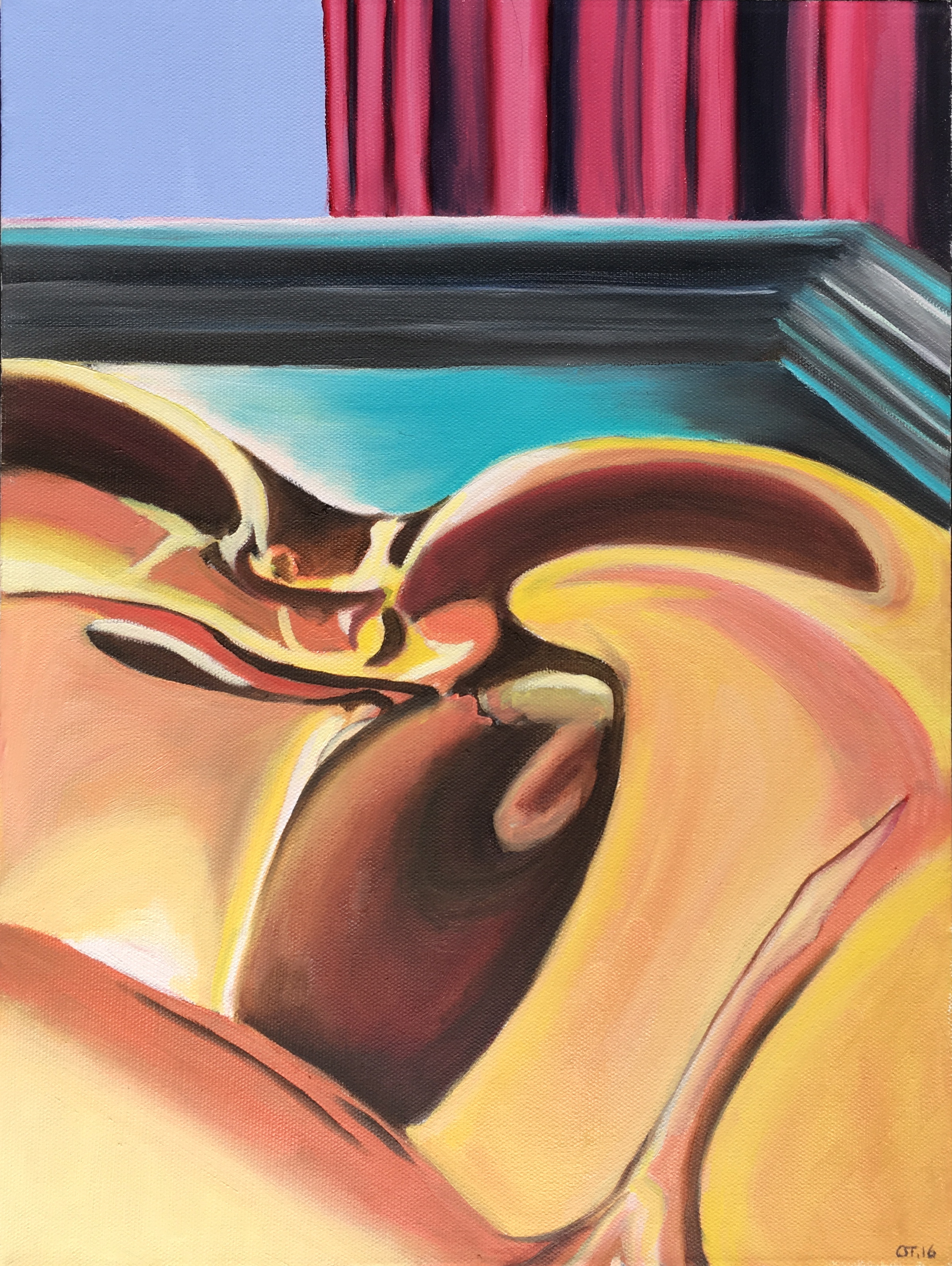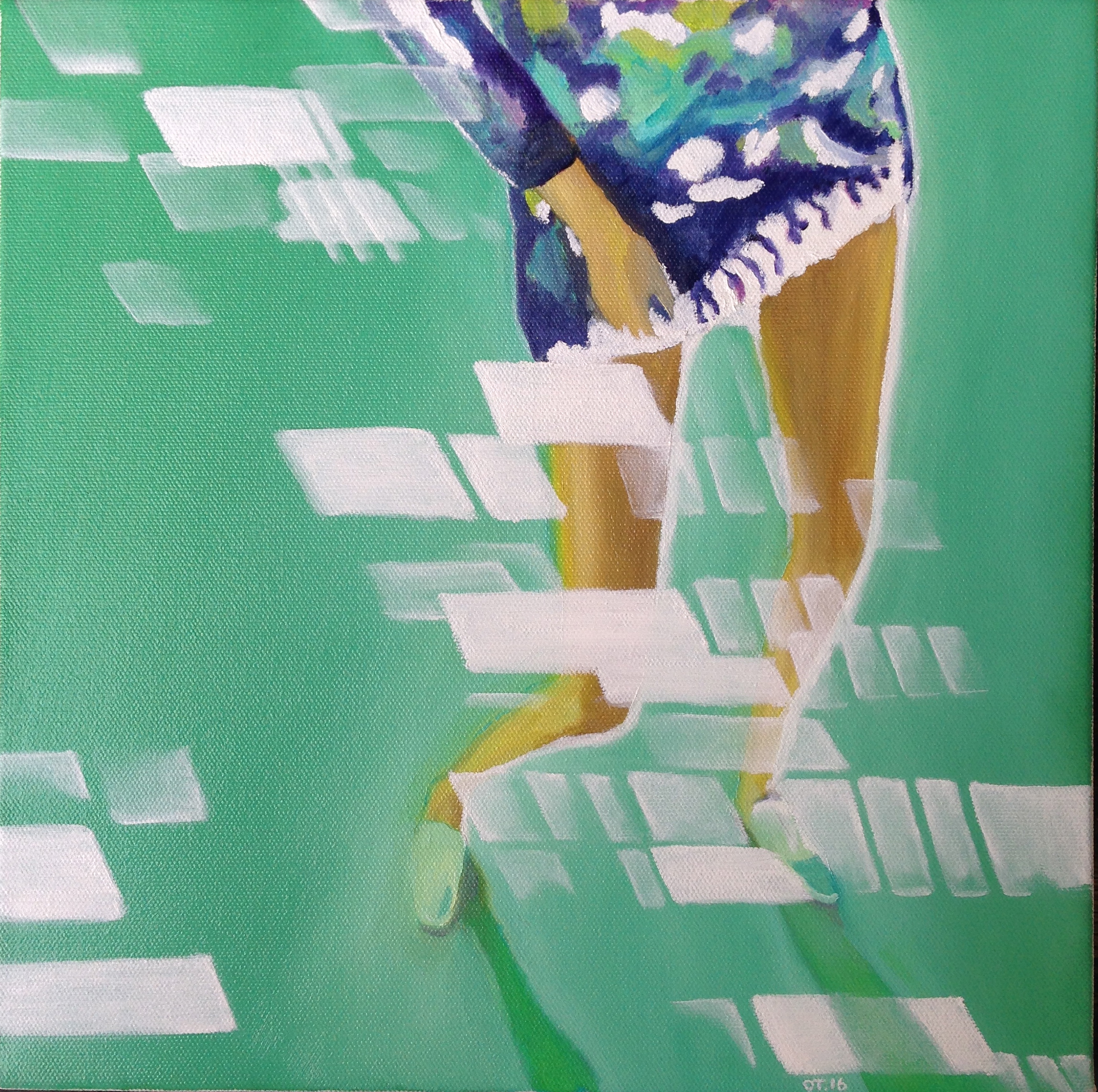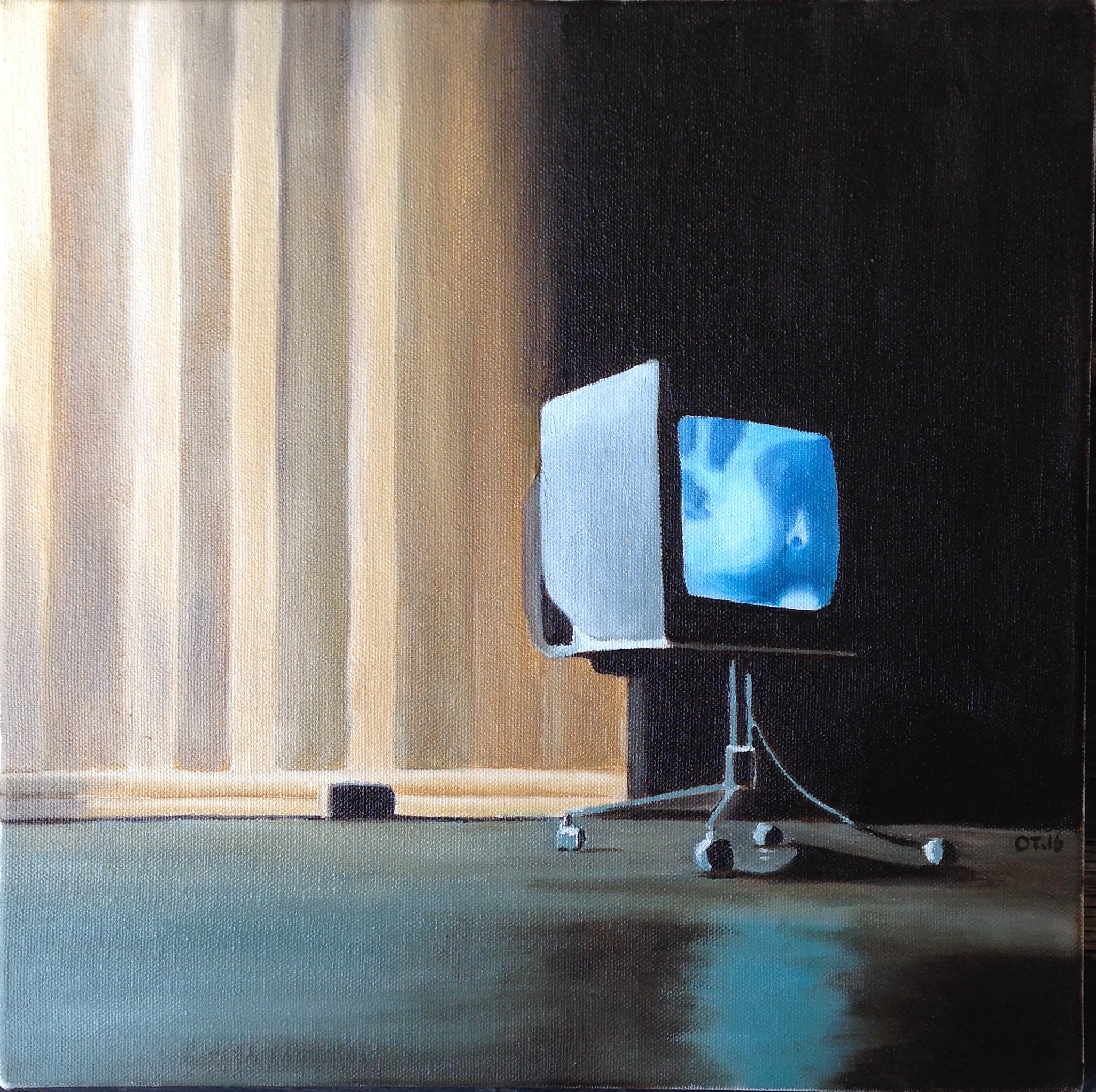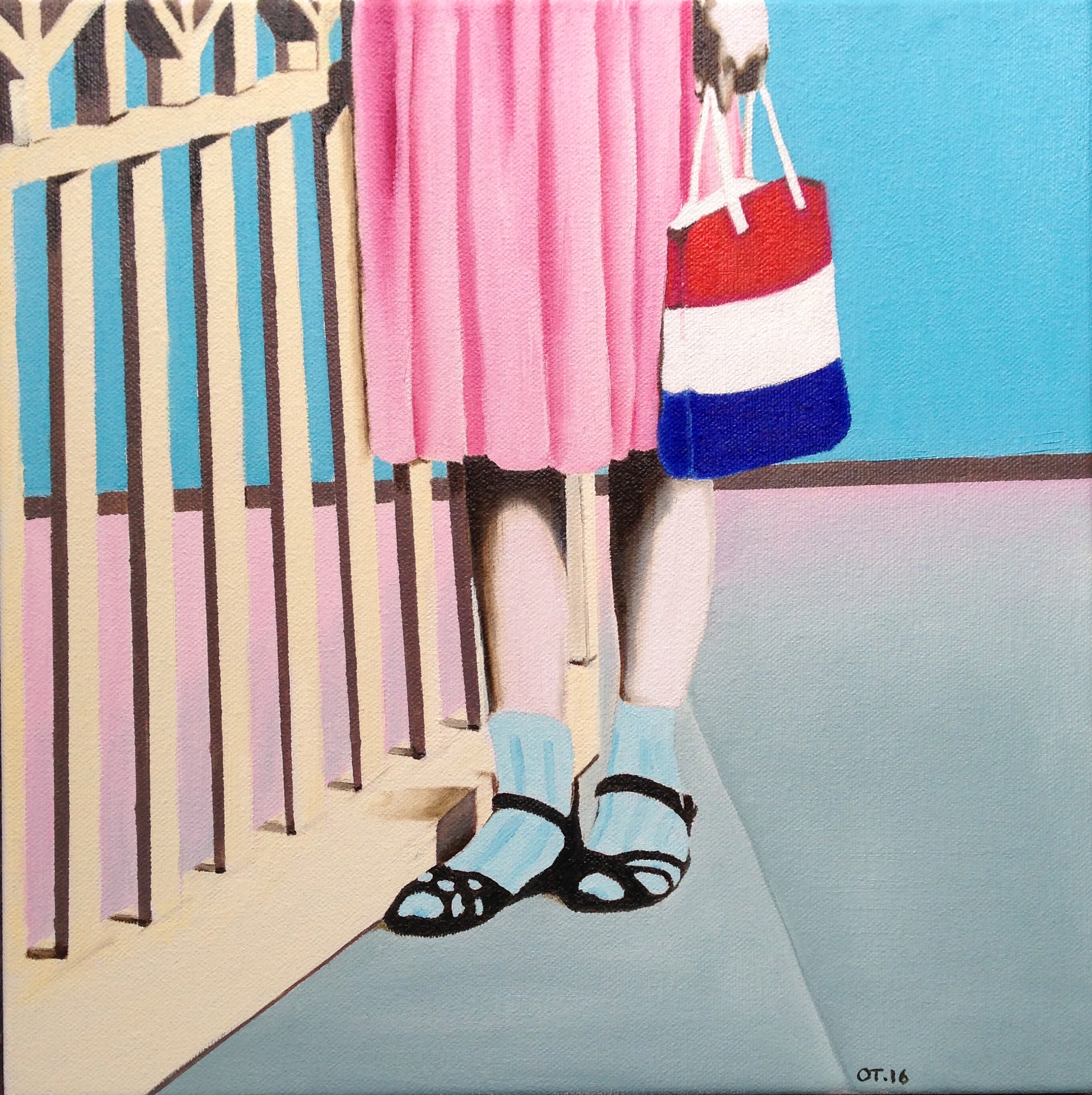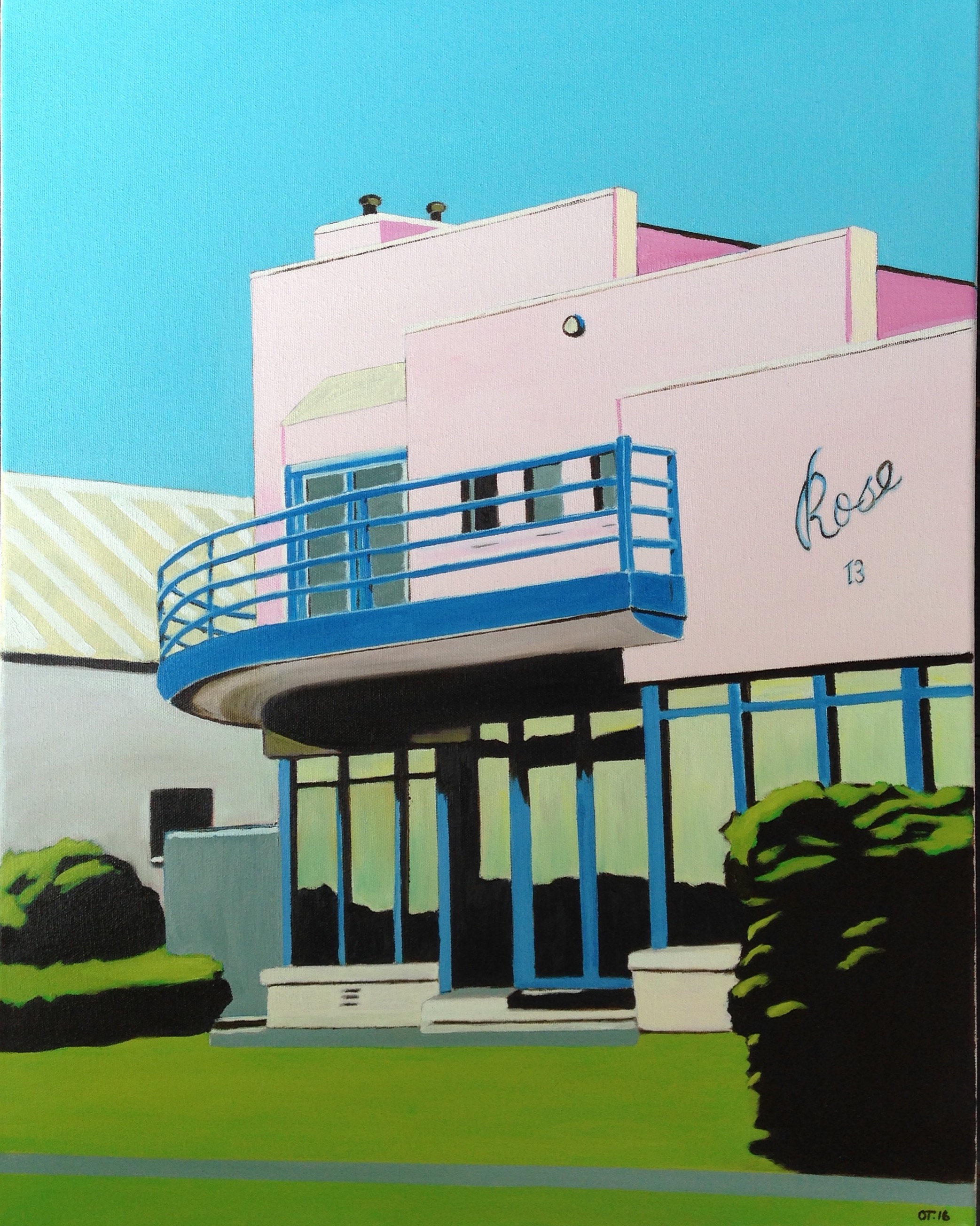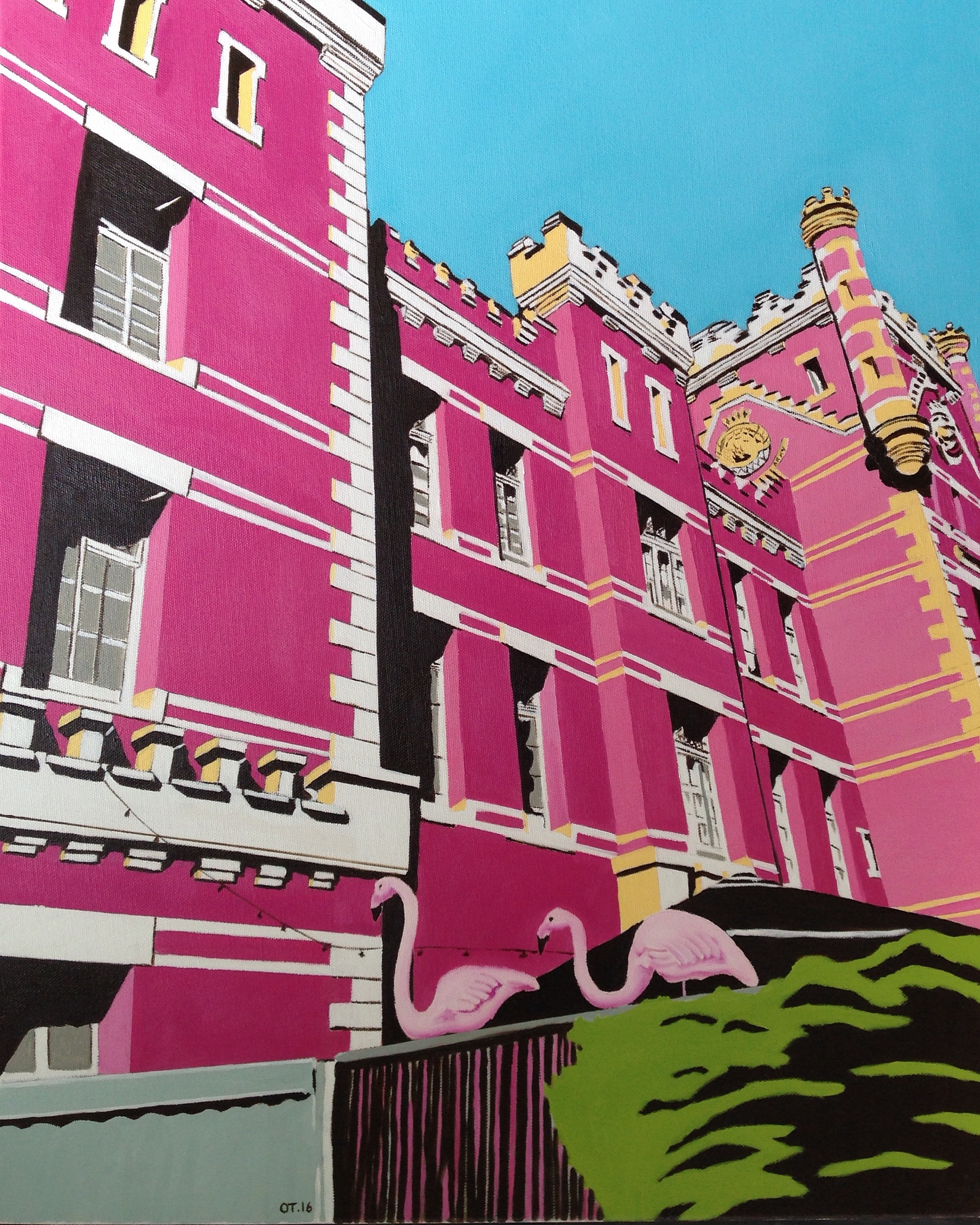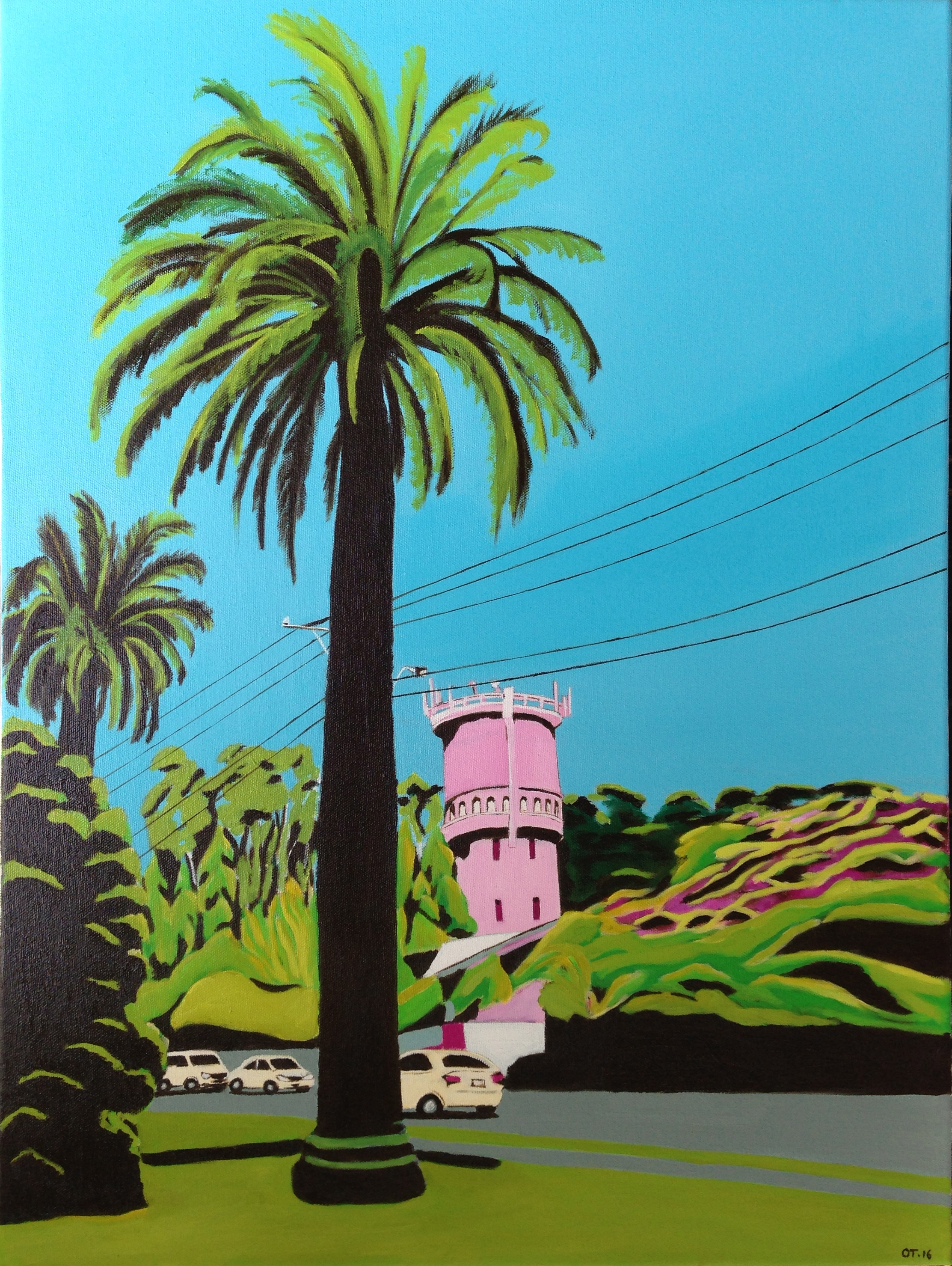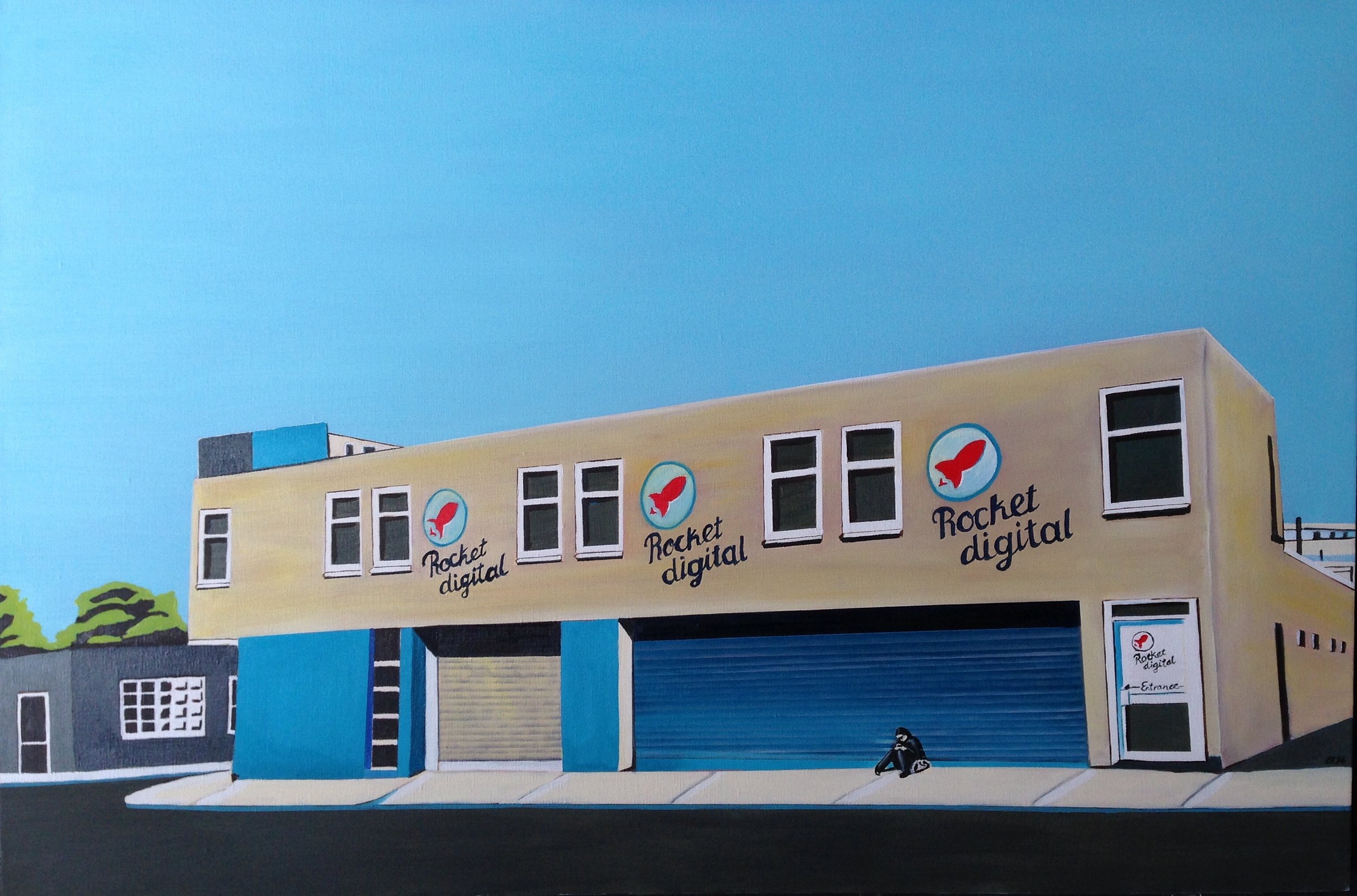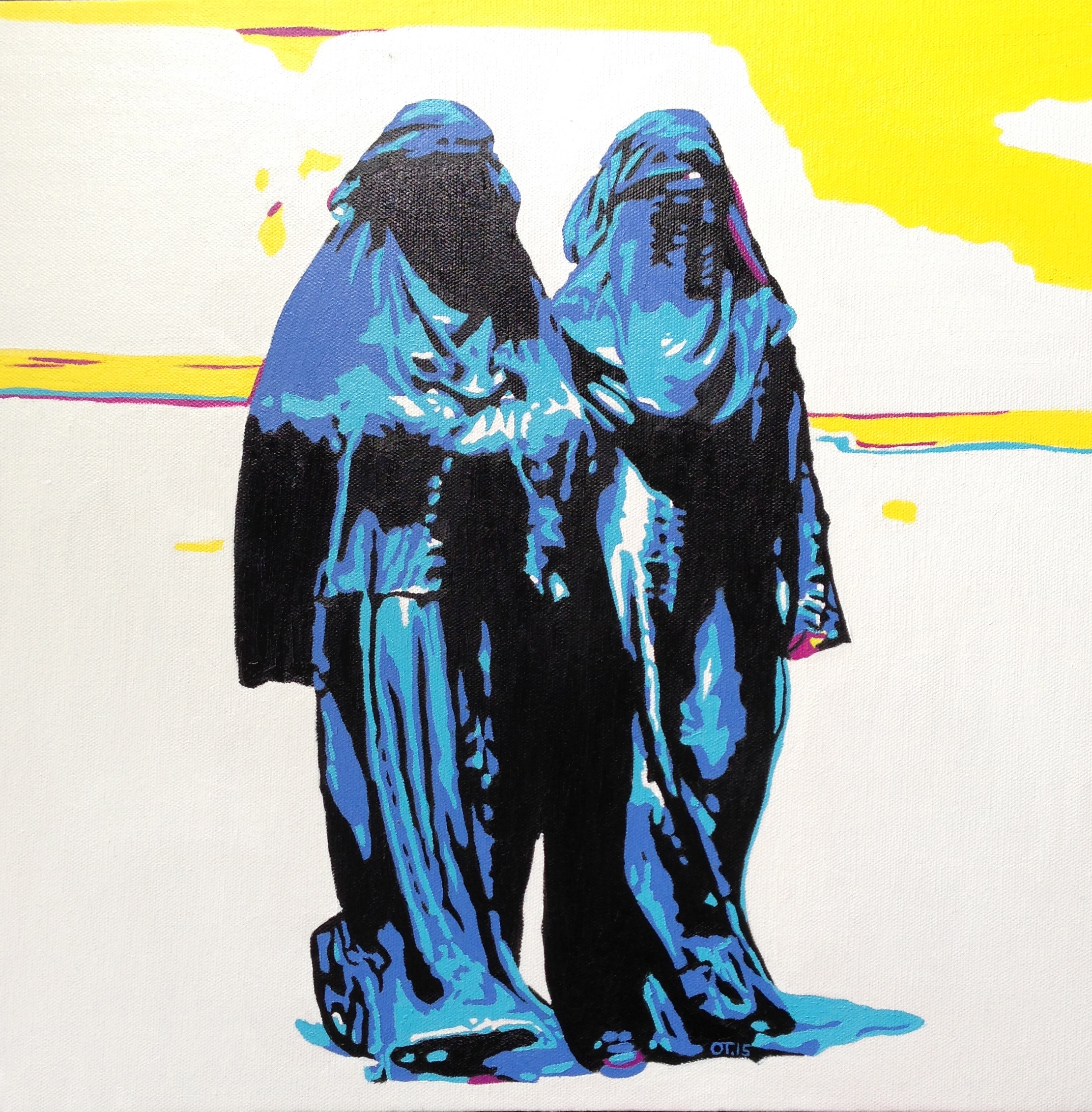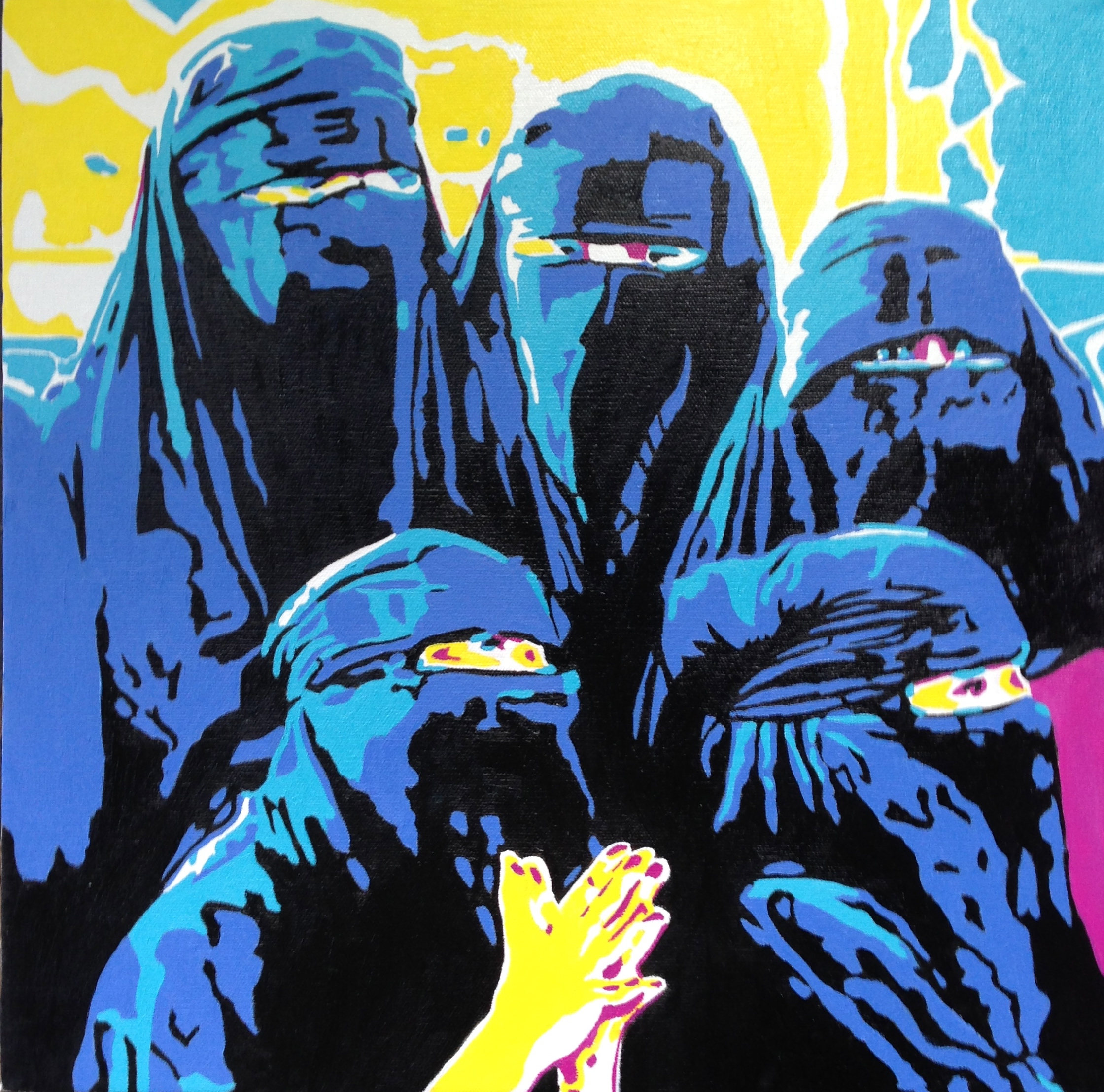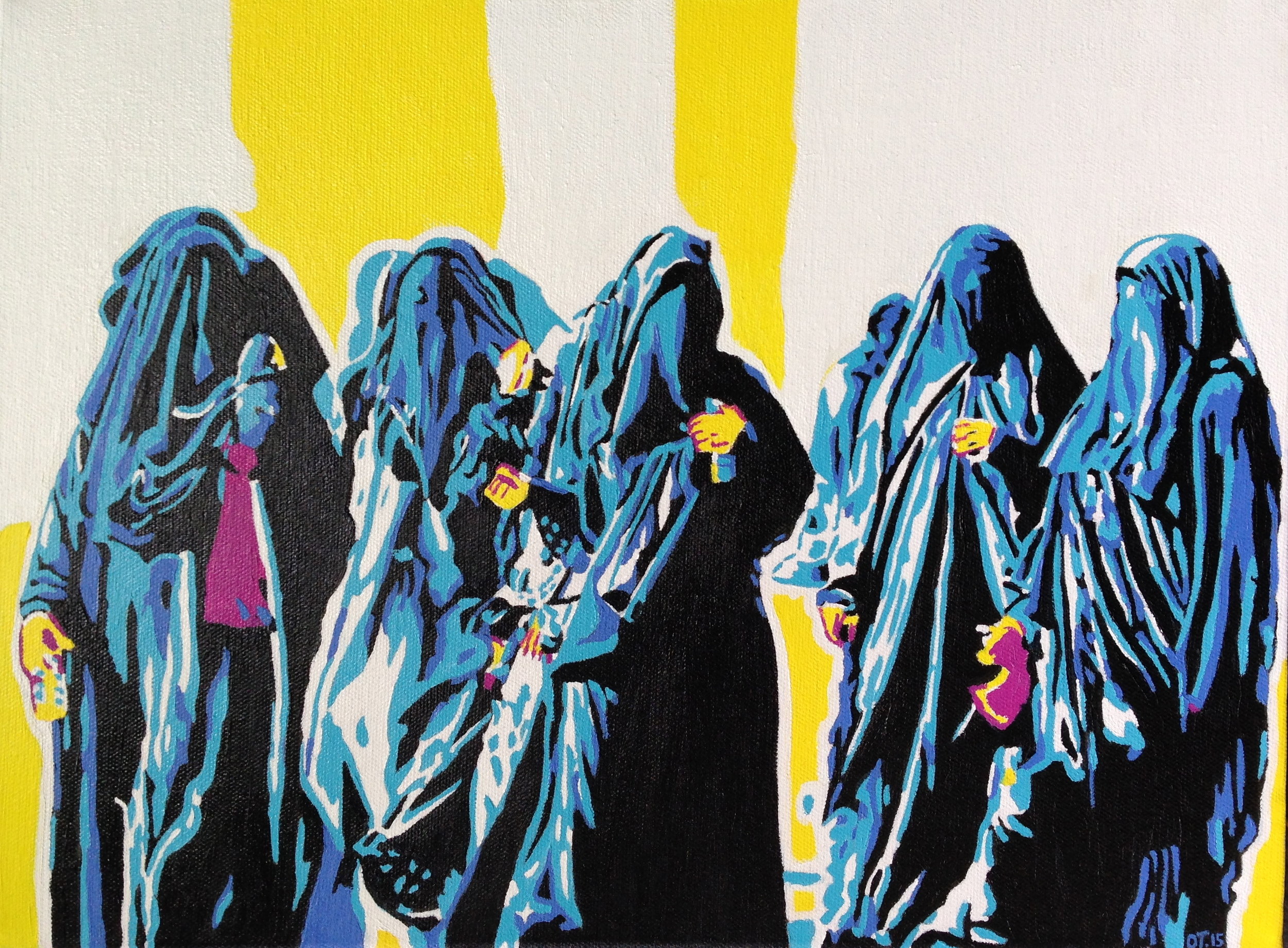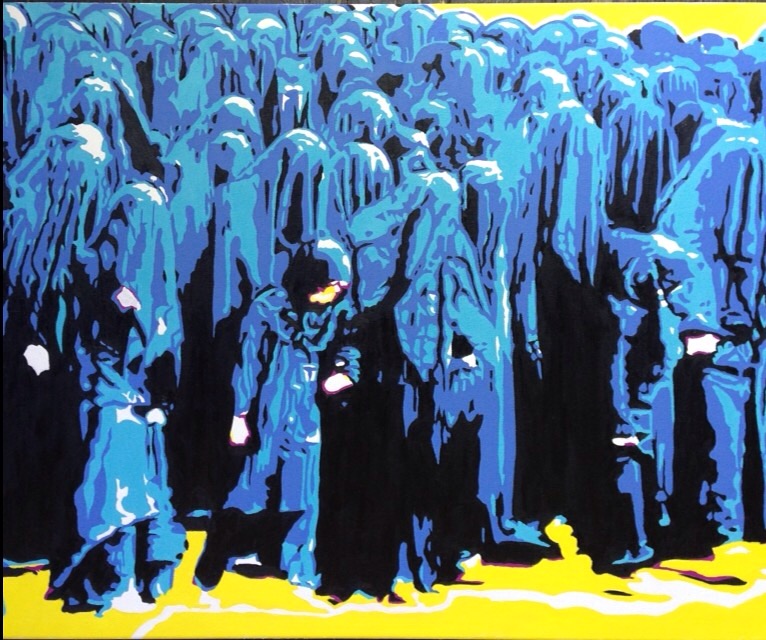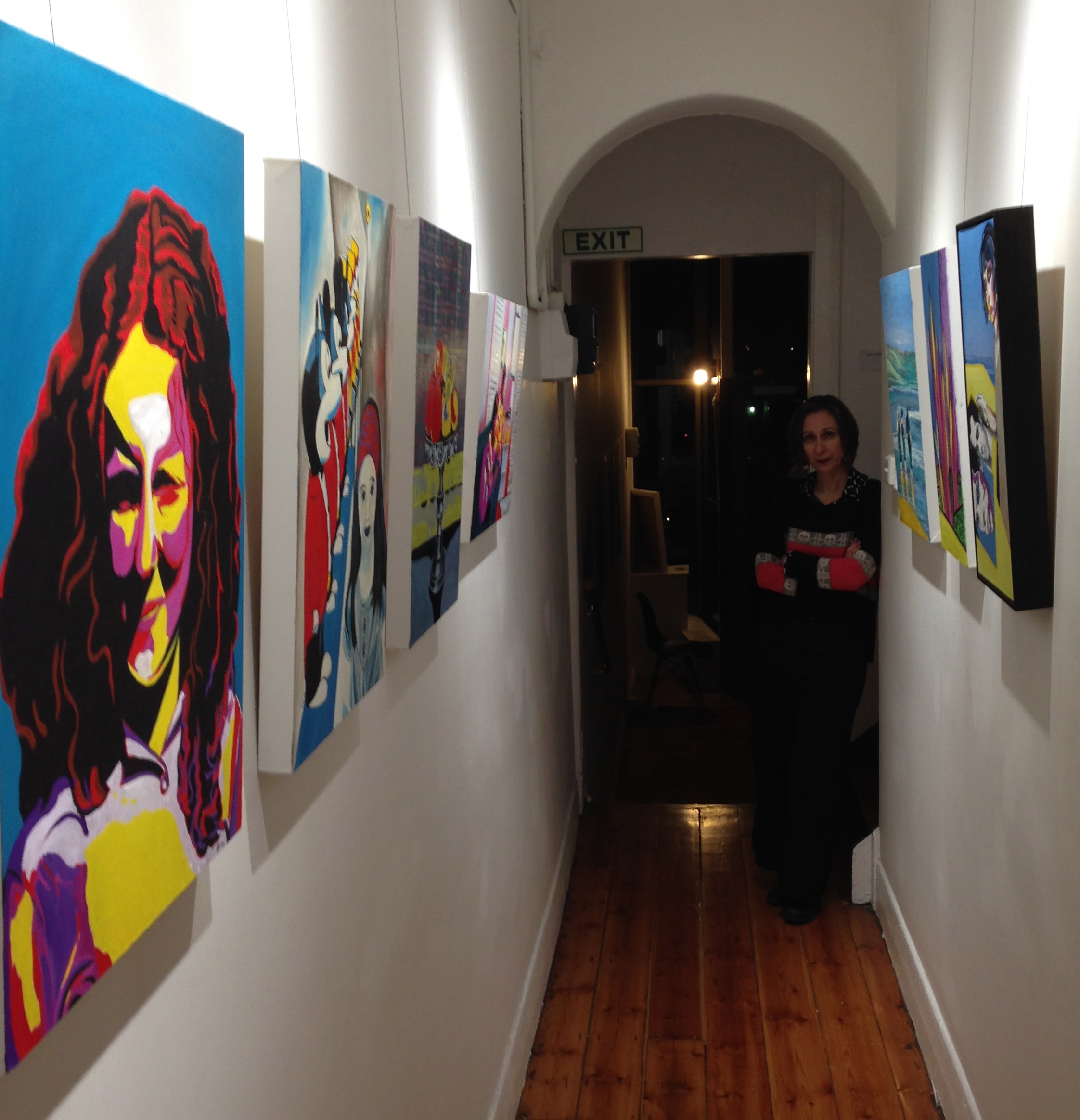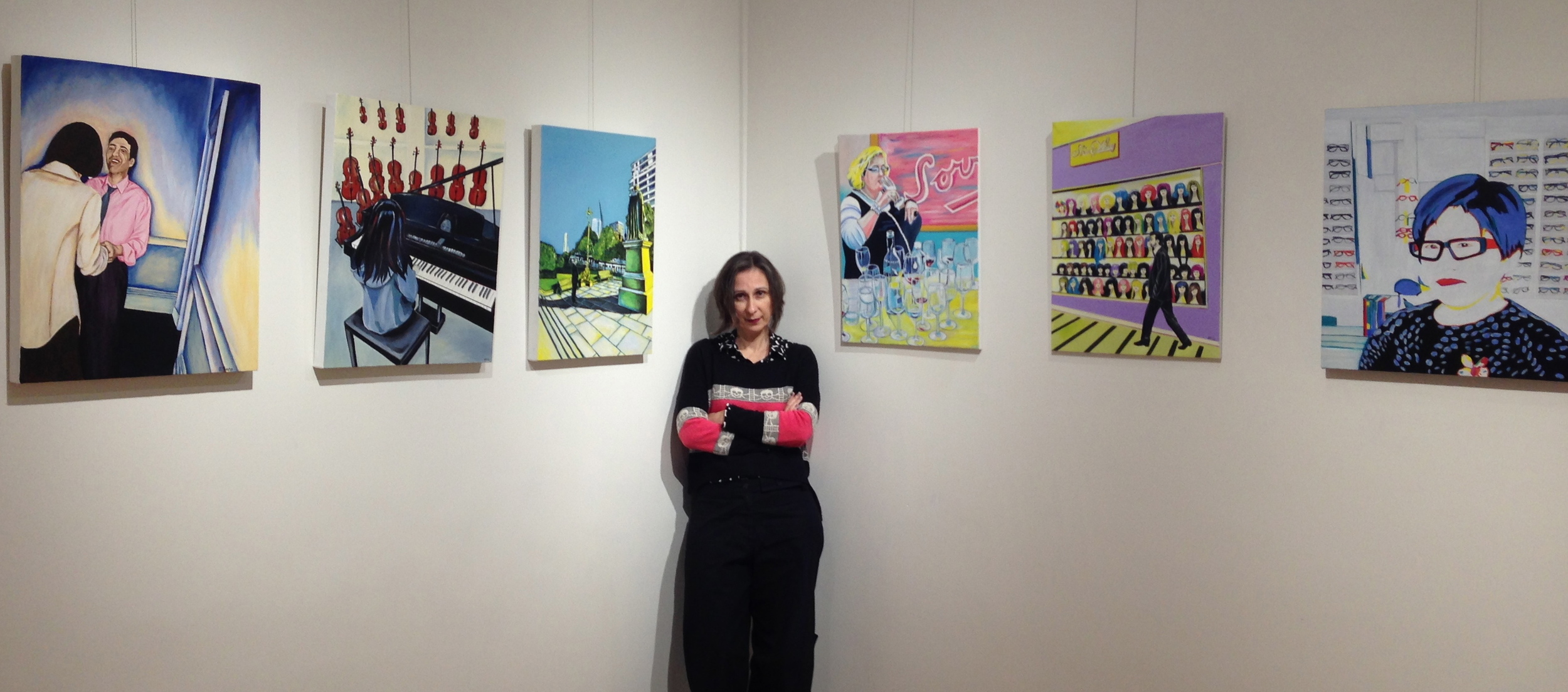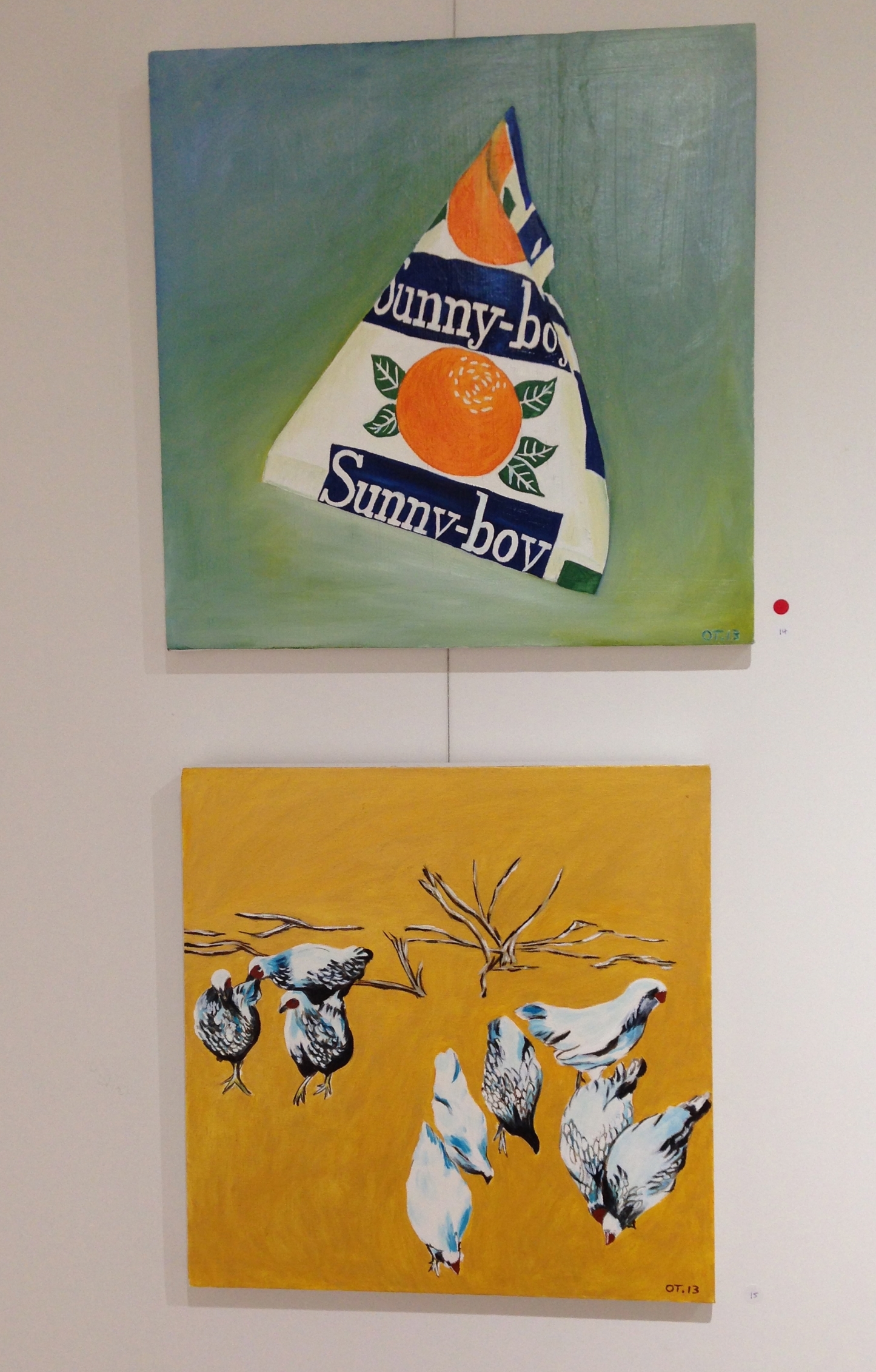Here is a list of the paintings with some notes on the sources I used:
How much of me is here?
Daguerreotype of anonymous girl, unknown photographer, ca. 1850-ca. 1860, collection of University of Antwerp
Epirus, my heart
“Costumes Grecs”, hand coloured postcard, unknown photographer, ca 1870; background from Instagram
Byzantines
“Women of Constantinople”, albumen silver photograph by Pascal Sebah, 1873, from left to right, Greek Girl, Armenian bride, Turkish girl from Istanbul; background from Instagram
Misfits
Hand coloured albumen silver photograph, Talma & Co., ca. 1880.
Toi et moi
‘Vlachs from Albania’, albumen silver photograph, ca. 1880, unknown photographer; Otways in background
Le femme extraordinaires
‘Working woman’ by Baron von Stillfried, albumen silver photograph, National Museum of Denmark, ca. 1875; wallpaper from Nautigals in Apollo Bay; composition after Edward Hopper ‘Rooms by the sea’
Chic. Chic. Cool. Cool.
Anonymous couple, hand coloured photograph by unknown photographer, ca. 1920; background from Instagram
Groom stripped bare
‘Japanese Gentleman in Western Garb’, tinted albumen silver photograph, 1875-1878, Baron von Stillfried; room setting is taken from the recreation of Duchamp’s room: *la chute d’eau, (the waterfall) *le gaz d’eclairage (the eliminating Gas…) 1946-1966, now Philadelphia Museum of Art.
Old futurisms
‘Miss G. Graham’, toned gelatin silver photograph by Ruth Hollick, ca. 1920-ca. 1930, collection of State Library Victoria; background from Instagram
Leonardo’s ascent
‘Concubine with bound feet’ [title attributed by artist] by Lai-Wah & Co, Shanghai, ca. 1899-ca. 1910, collection of State Library Victoria; background – Staircase designed by Leonardo da Vinci in 1516, Chateau de La Rochefoucauld Castle, France
Popsurrealism/art original
“Young woman with hookah”, albumen silver photograph by J. Pascal Sebah, ca. 1870; background from Instagram
Afrique, latest fashion
“Omani women in Zanzibar, latest fashion” by Gomes & Co., ca. 1895; Otways background.
Waiting for/Theatre de La Huchette
Unknown women, glass lantern slide with hand colouring, ca. 1900, unknown photographer; cinema views of the Theatre de La Huchette, Paris.
Teal sky
“Veiled Omano women in Zanzibar” by Gomes & Co., albumen silver photograph, ca. 1895; background after Grant Wood.
Soda love
“Korean Couple in Street Dress, Seoul, Korea”, 1904, glass lantern slide, unknown photographer; background from Instagram
Caryatid
“Fille de Shanghai”, albumen silver photograph, by Baron von Stillfried, 1872, (with modern colour enhancement); raining caryatids after ‘Golconda’ by René Magritte, 1953.
Ma vie en rose
“Bride’s traditional costume from Roumlouki, Macedonia, Greece”, albumen silver photograph, ca. 1900, unknown photographer; background from Instagram
Merchande de pommes, or Factory of inequality
“Marchande d’oranges Alexandria”, albumen silver carte-de-visite, by Hippolyte Delie, 1869; background, British Museum colonnade
Candy foyer
Anonymous child, ambrotype by unknown photographer, ca. 1865 background from Instagram
Secrets, they surface
‘Fille de Lanzhou’, albumen silver photograph, by Baron von Stillfried, ca. 1870 (collection of The MET)
Token
Kensington window, albumen silver photograph by Clementina Hawarden, 1863-64
Speak my name
Anonymous young woman, ambrotype ca. 1860; unknown photographer












